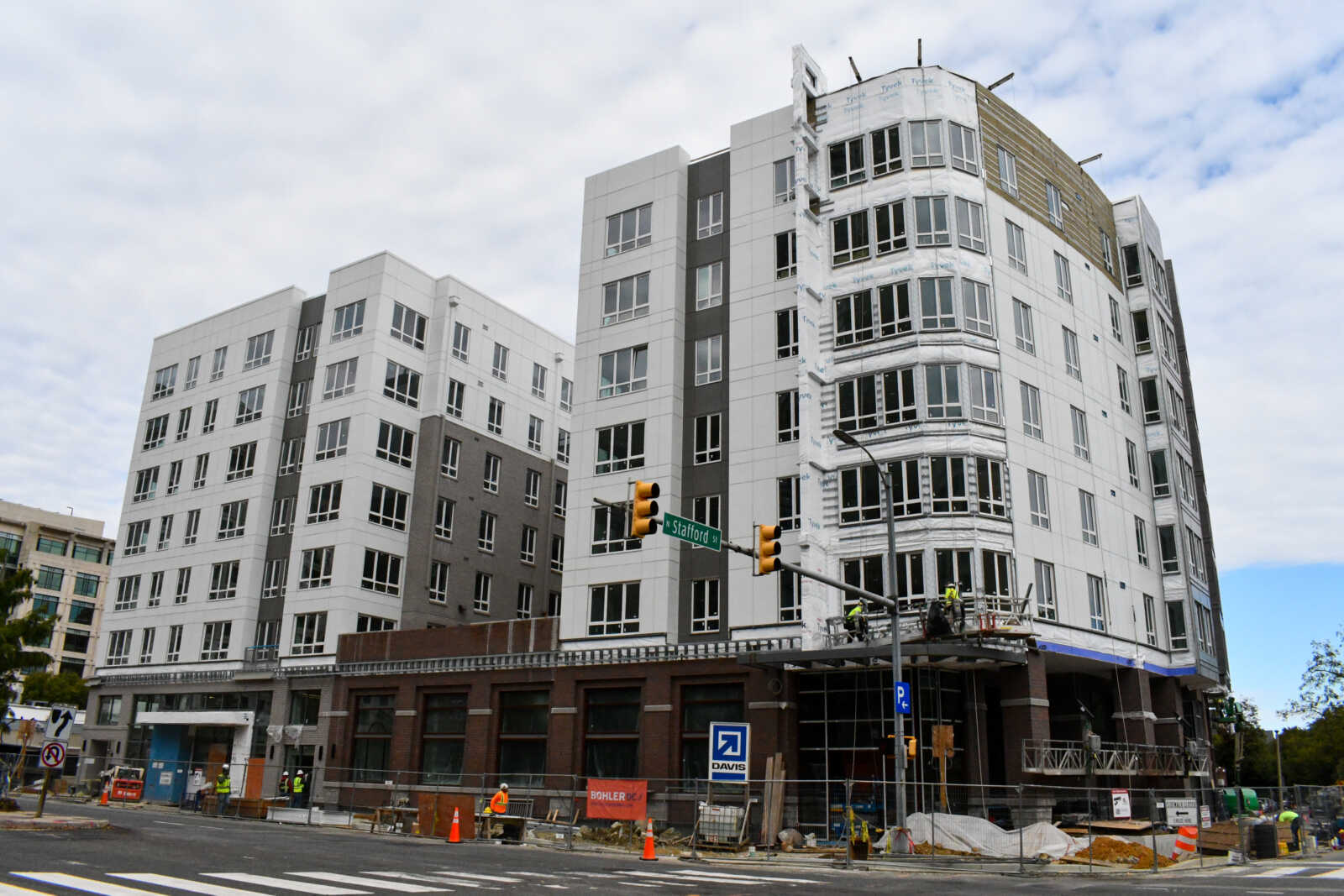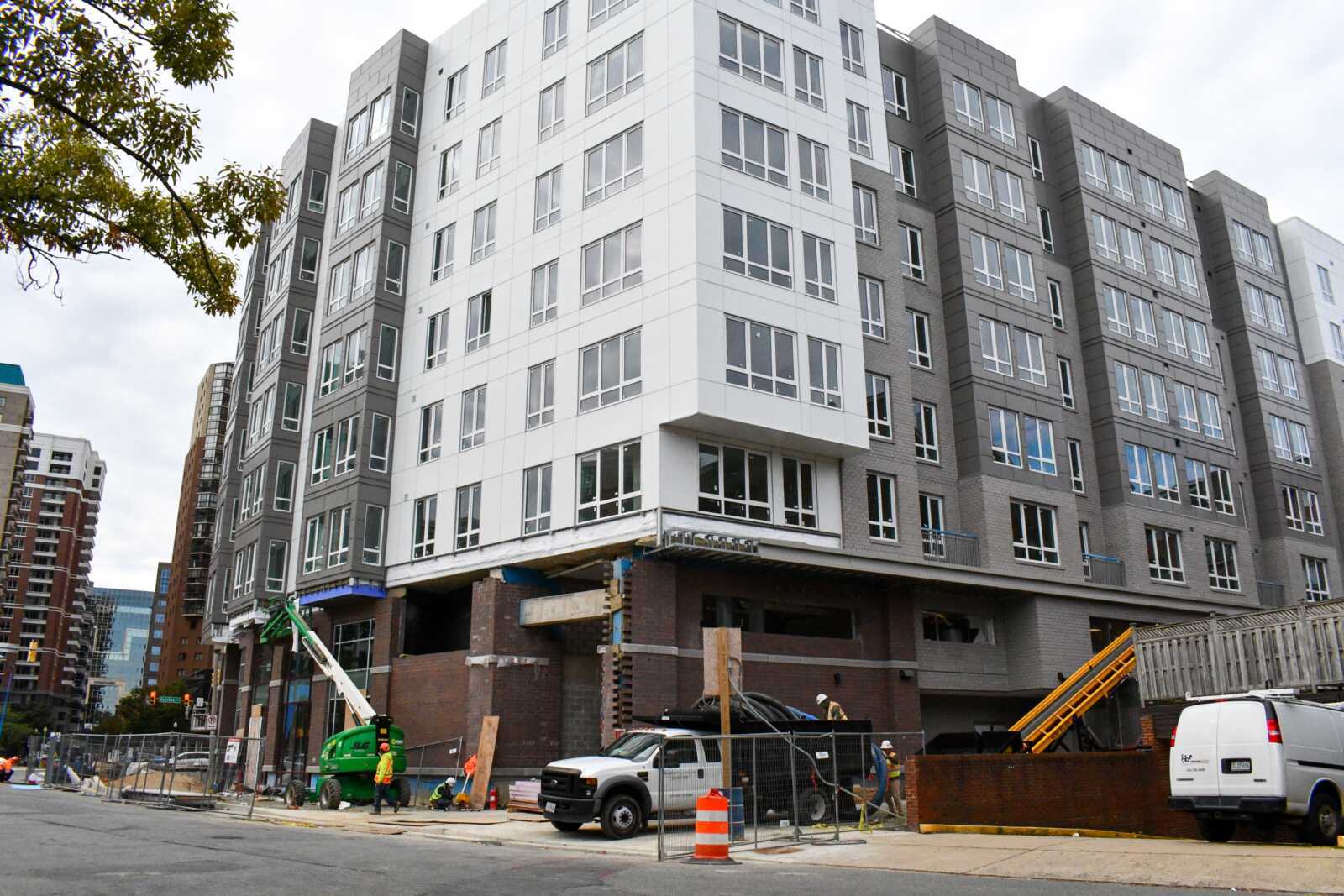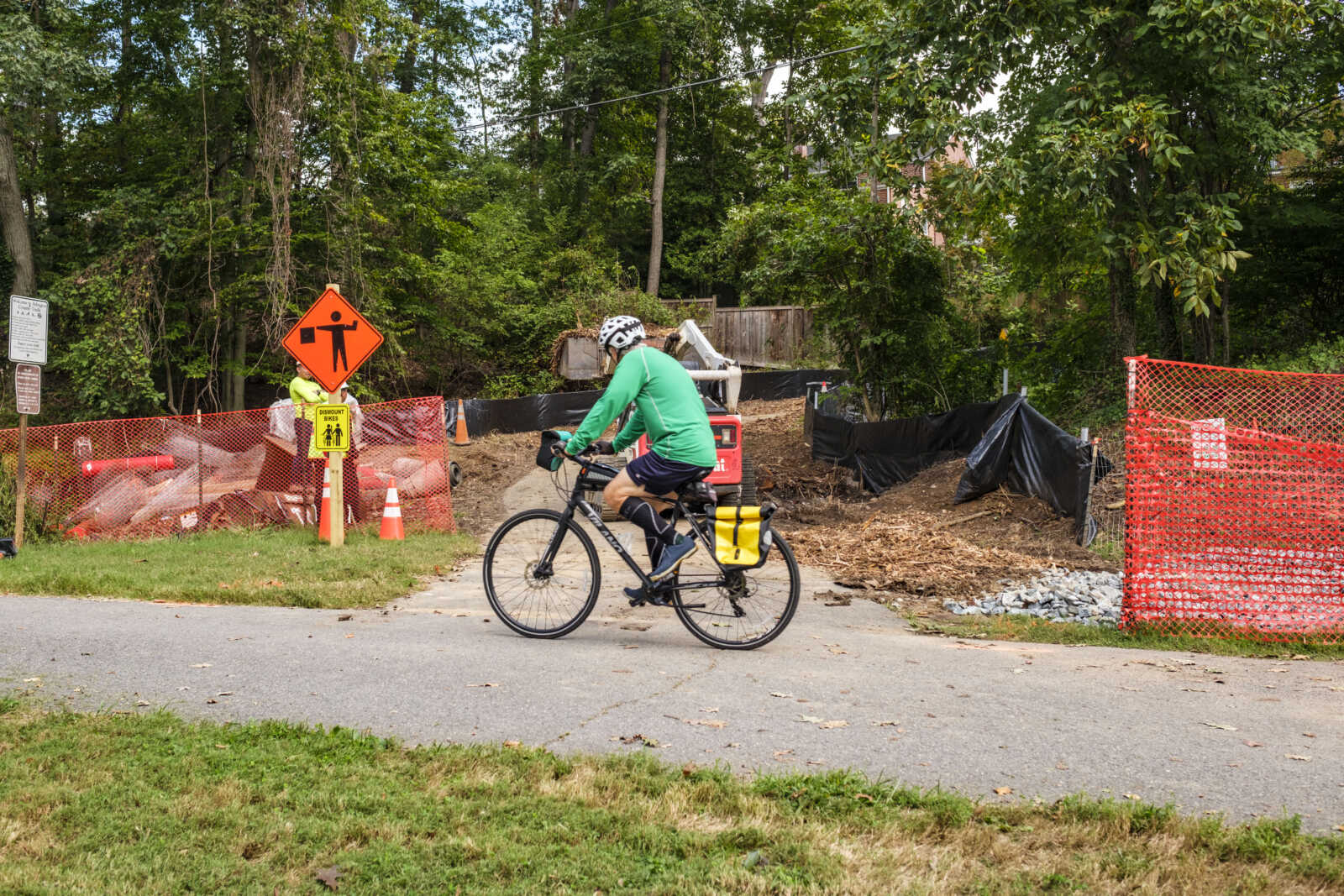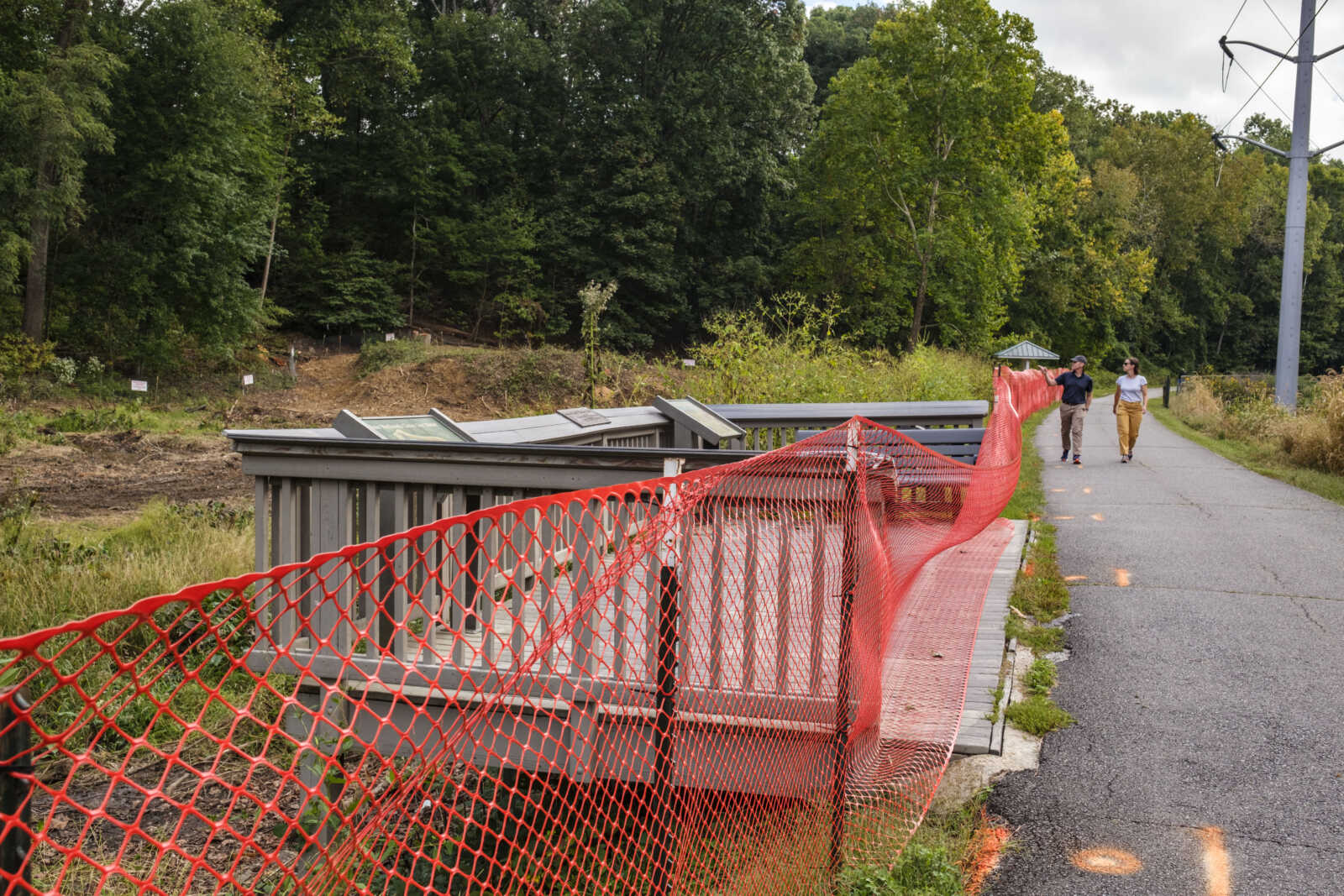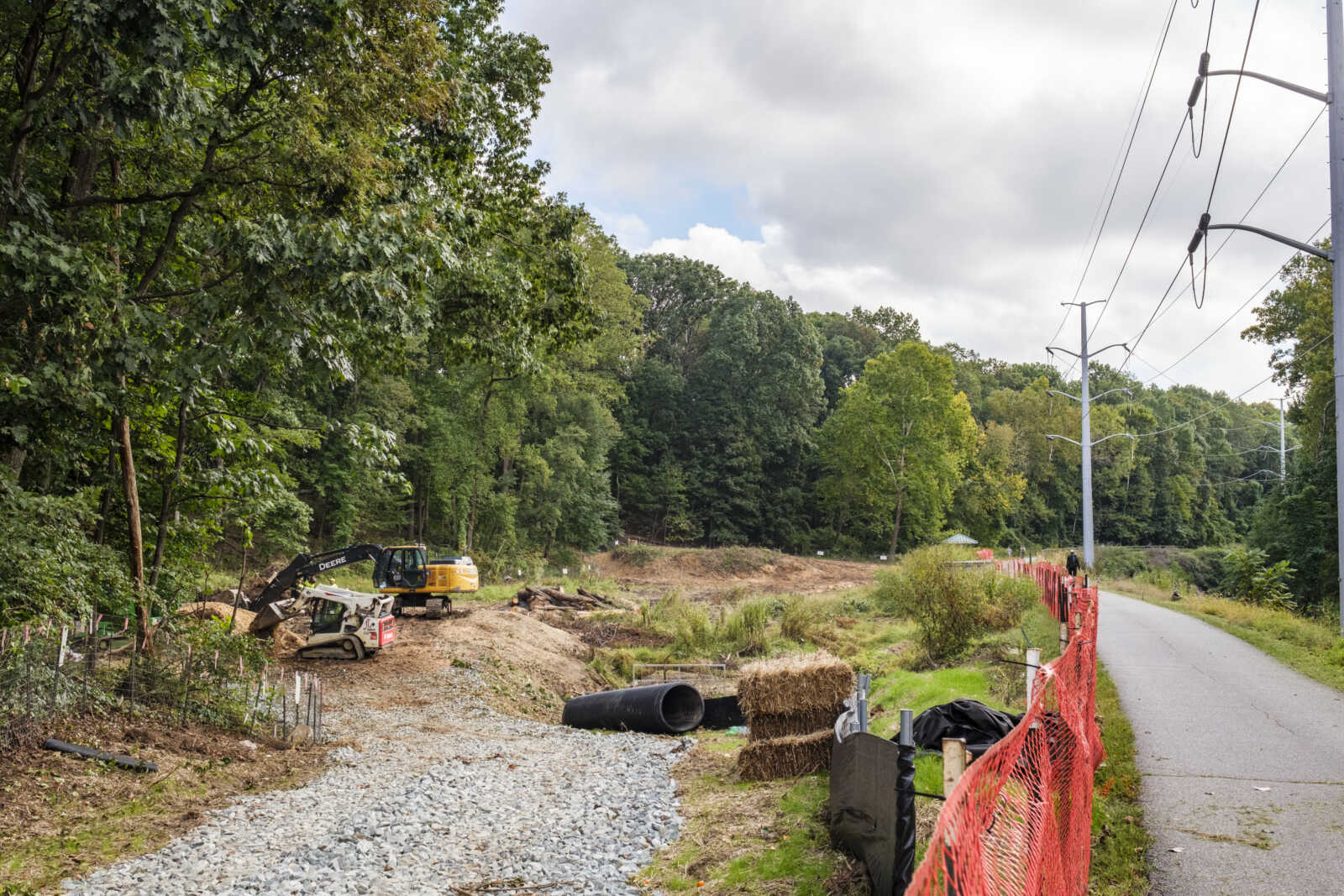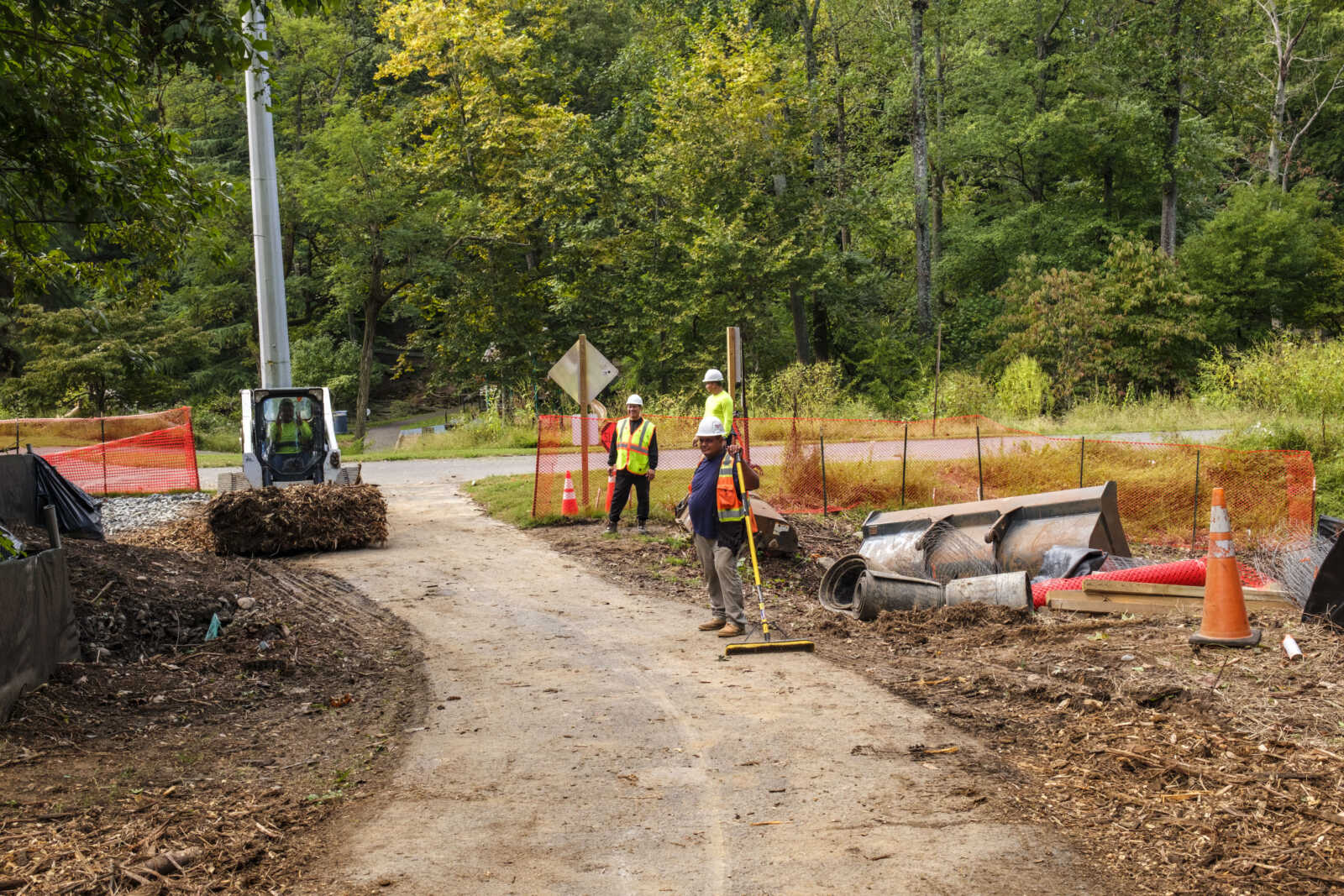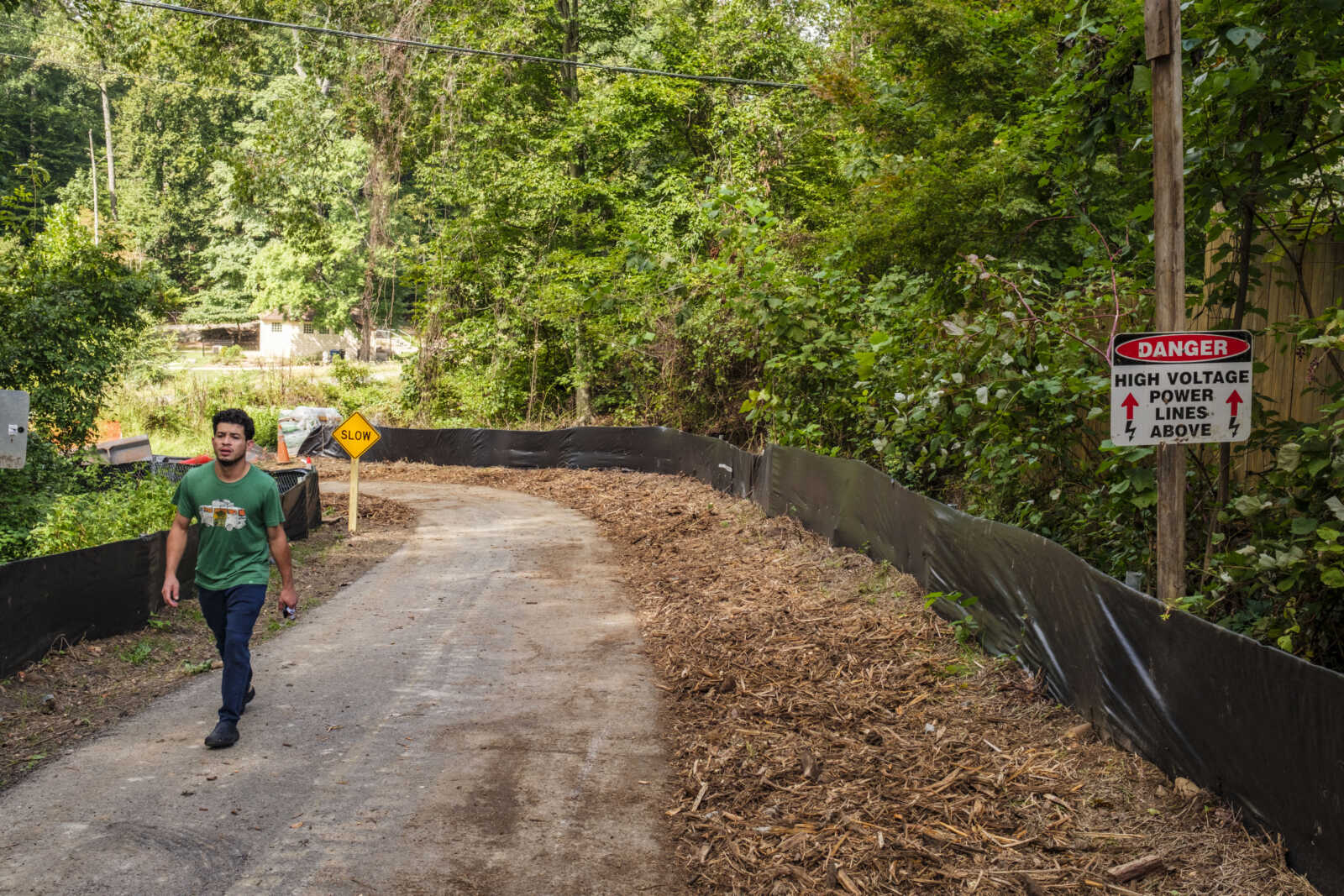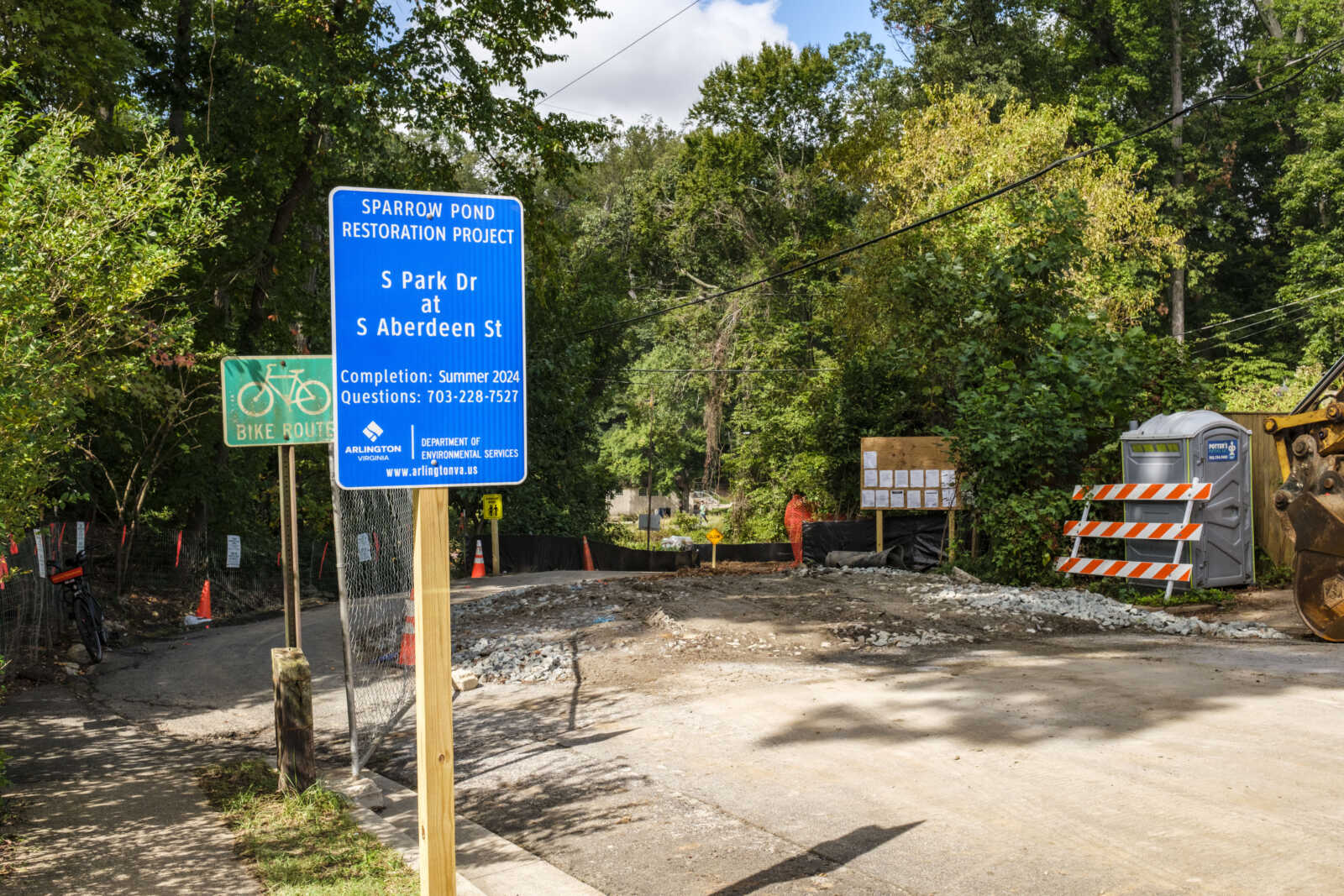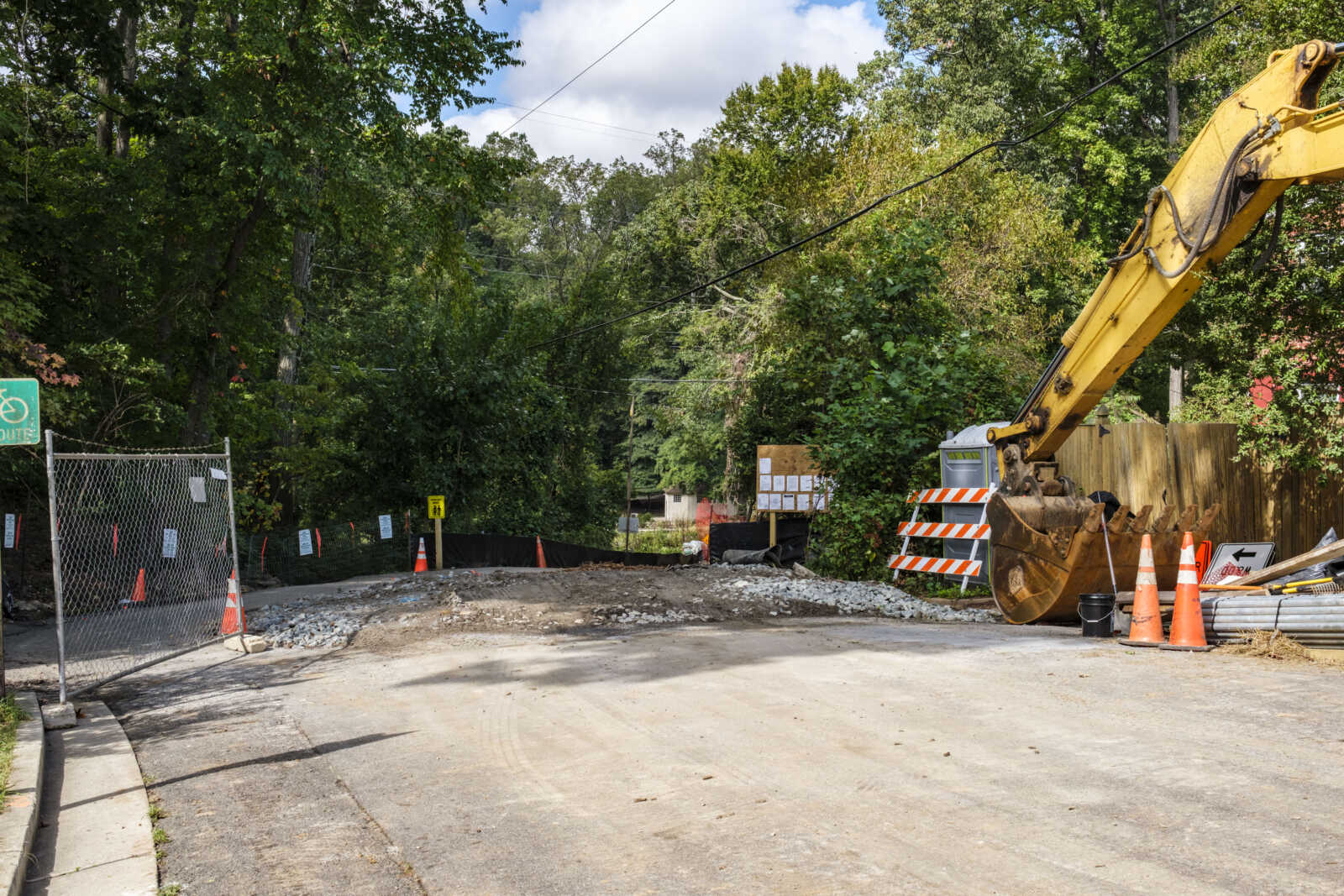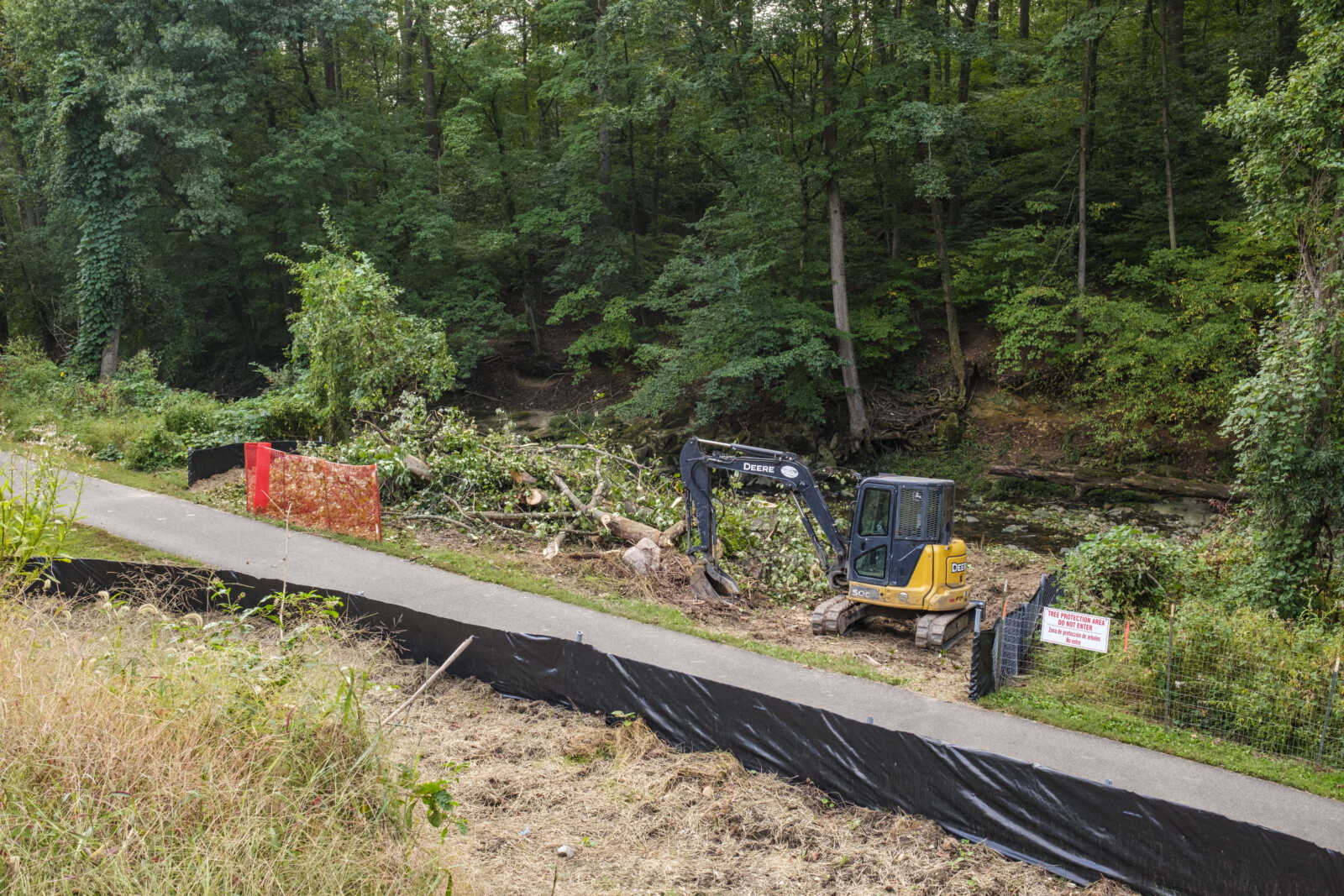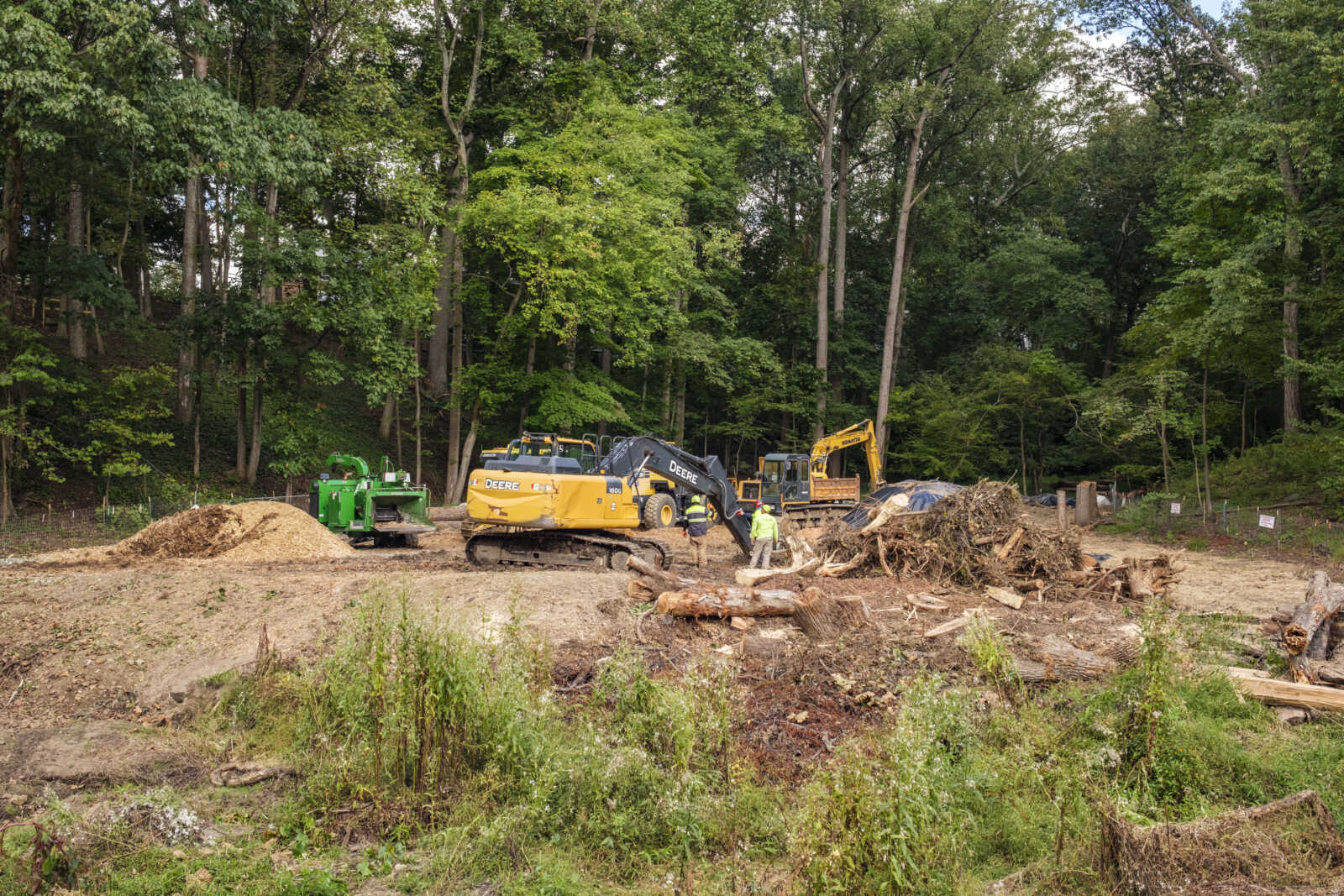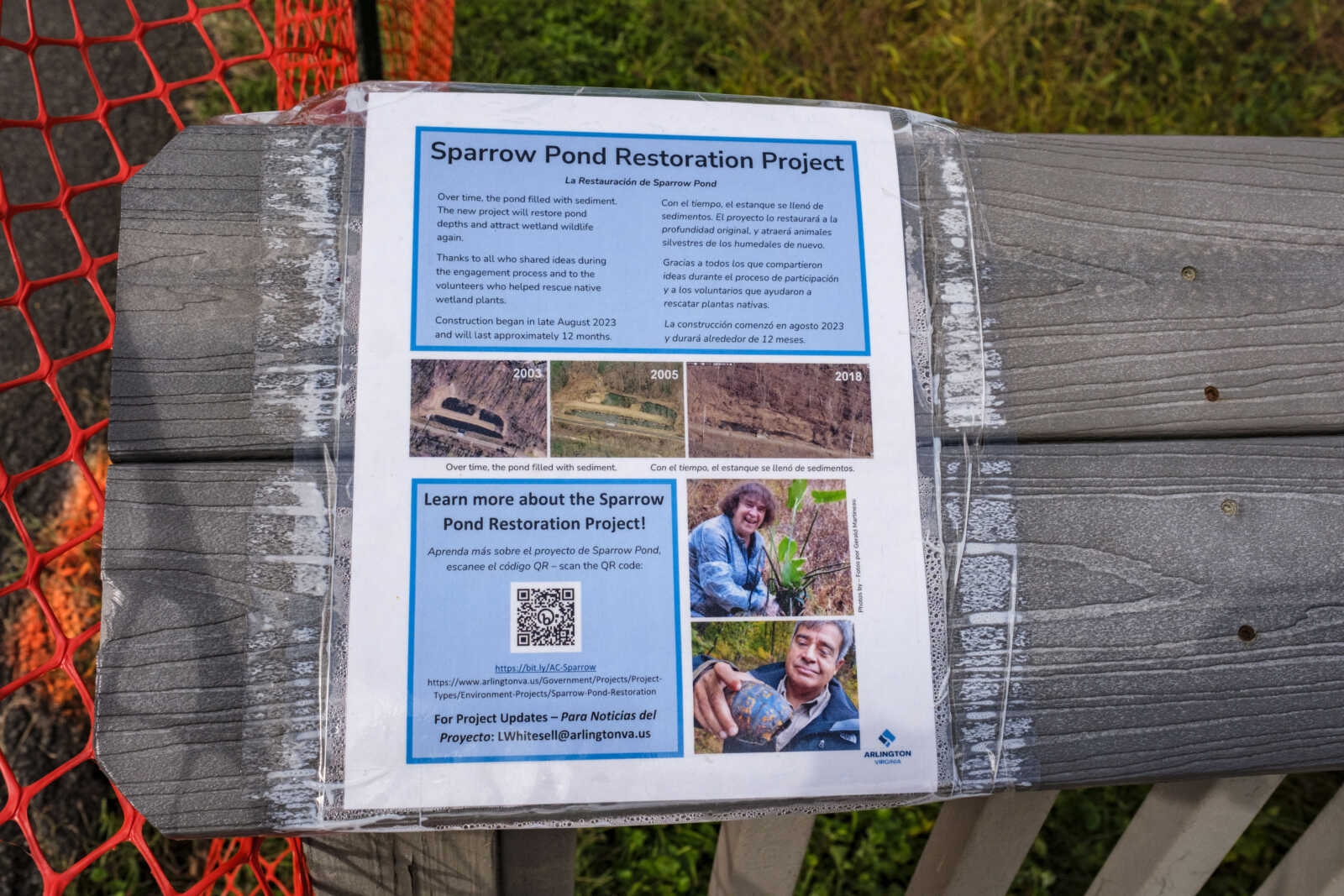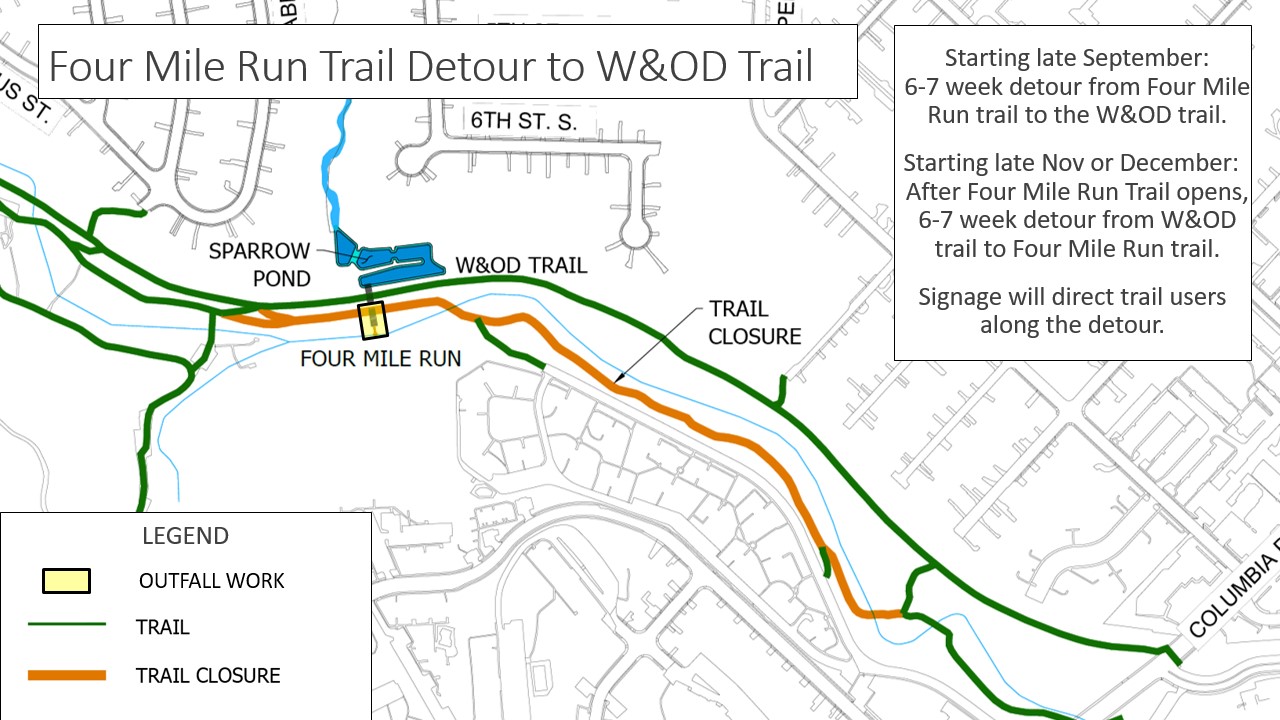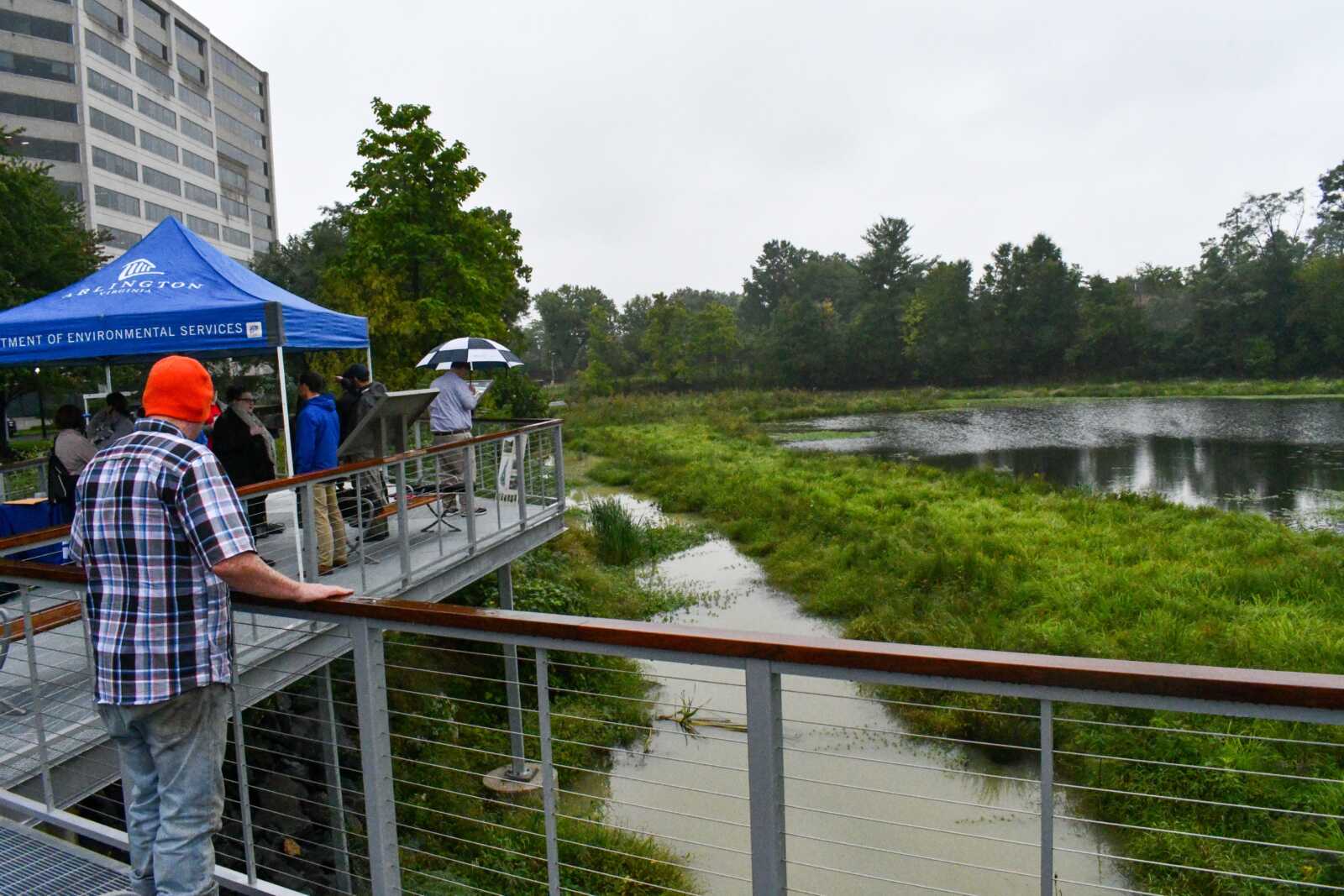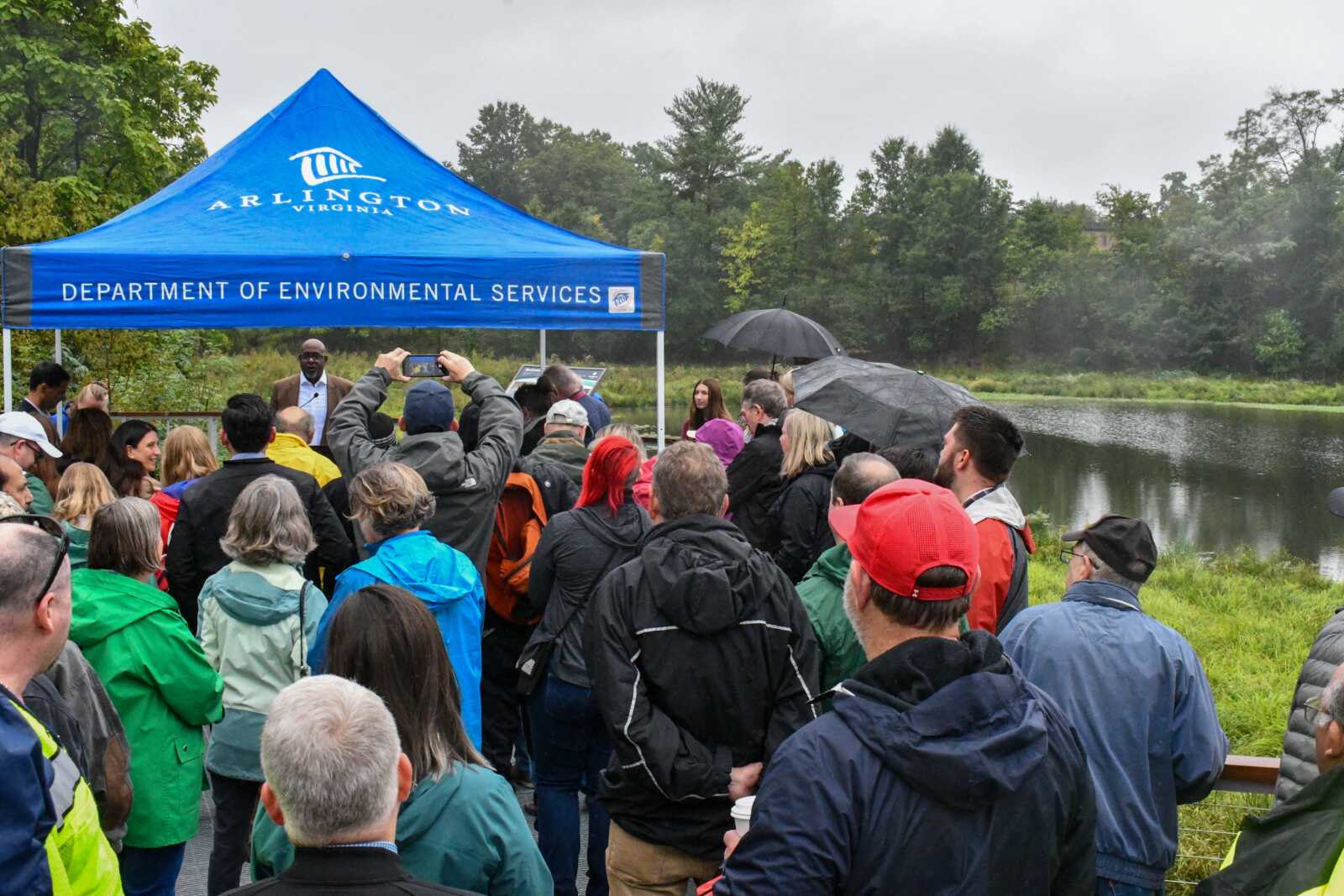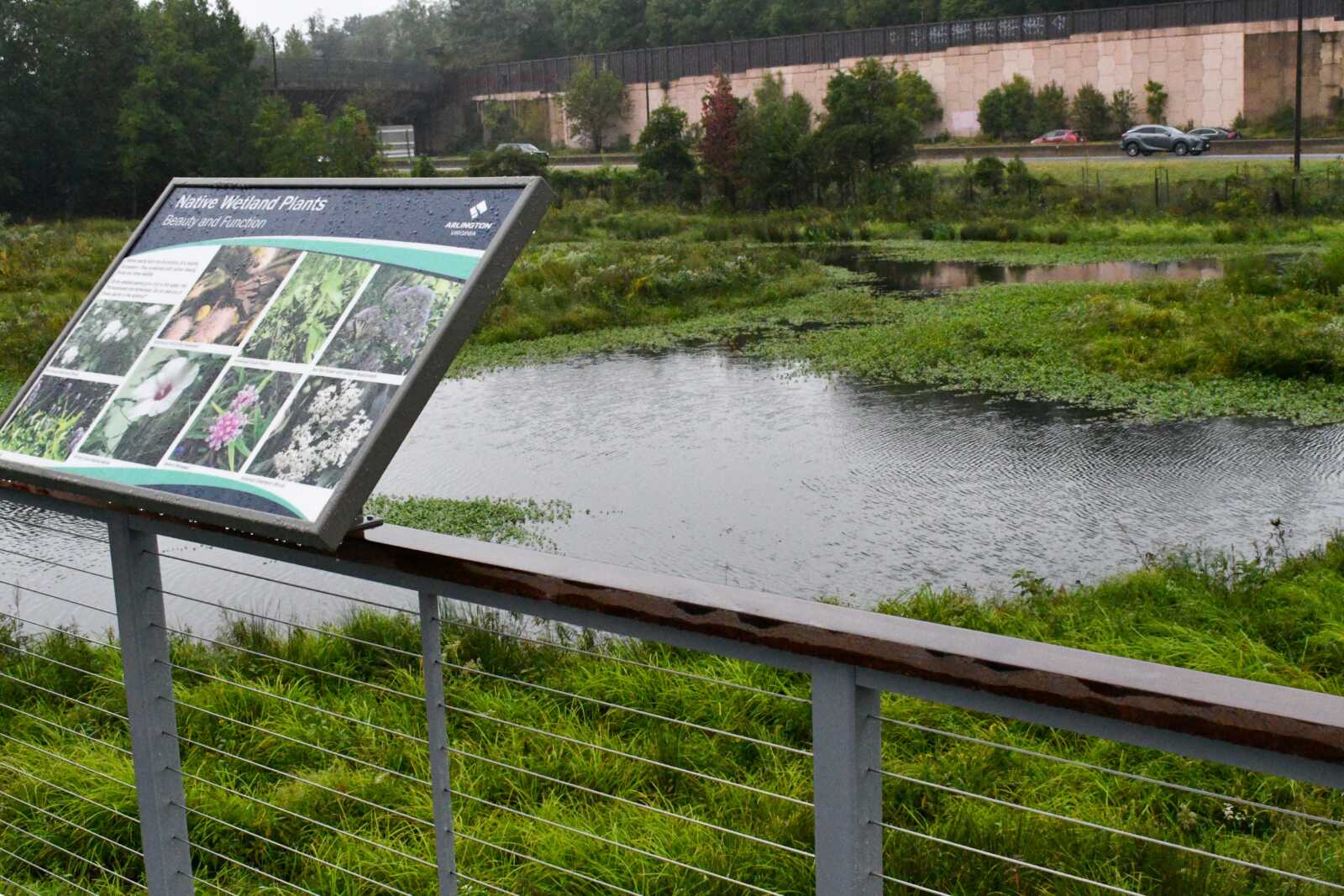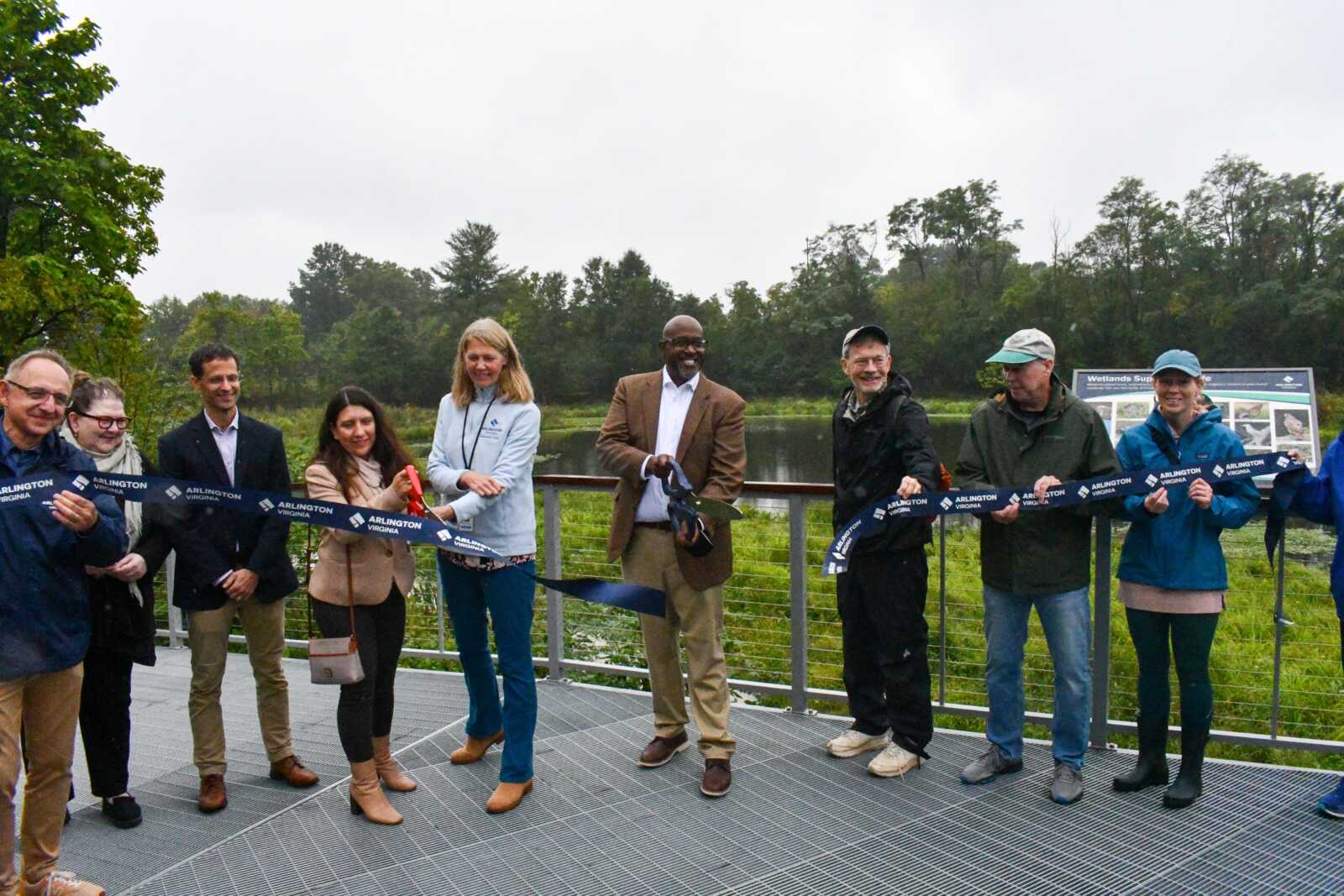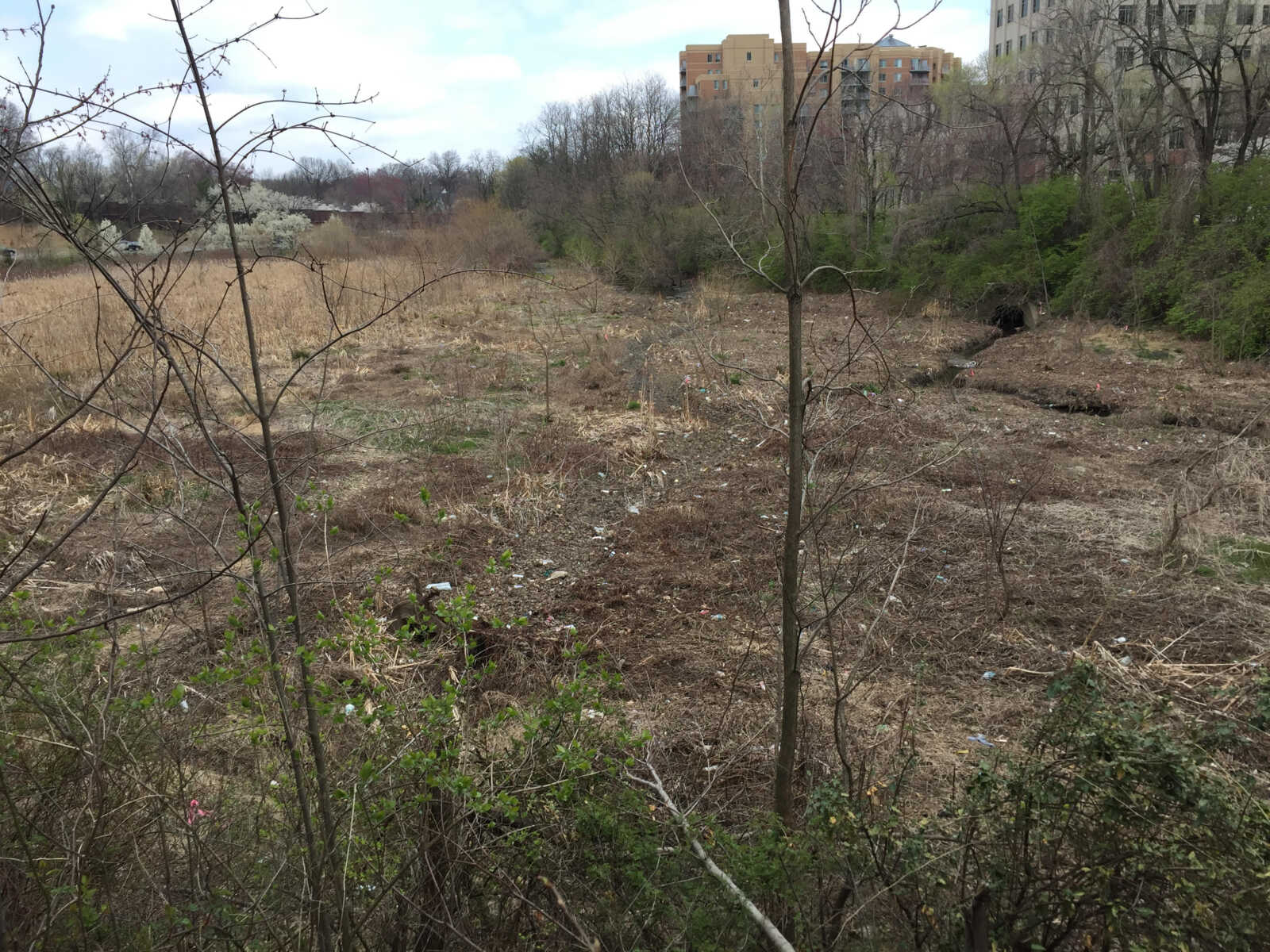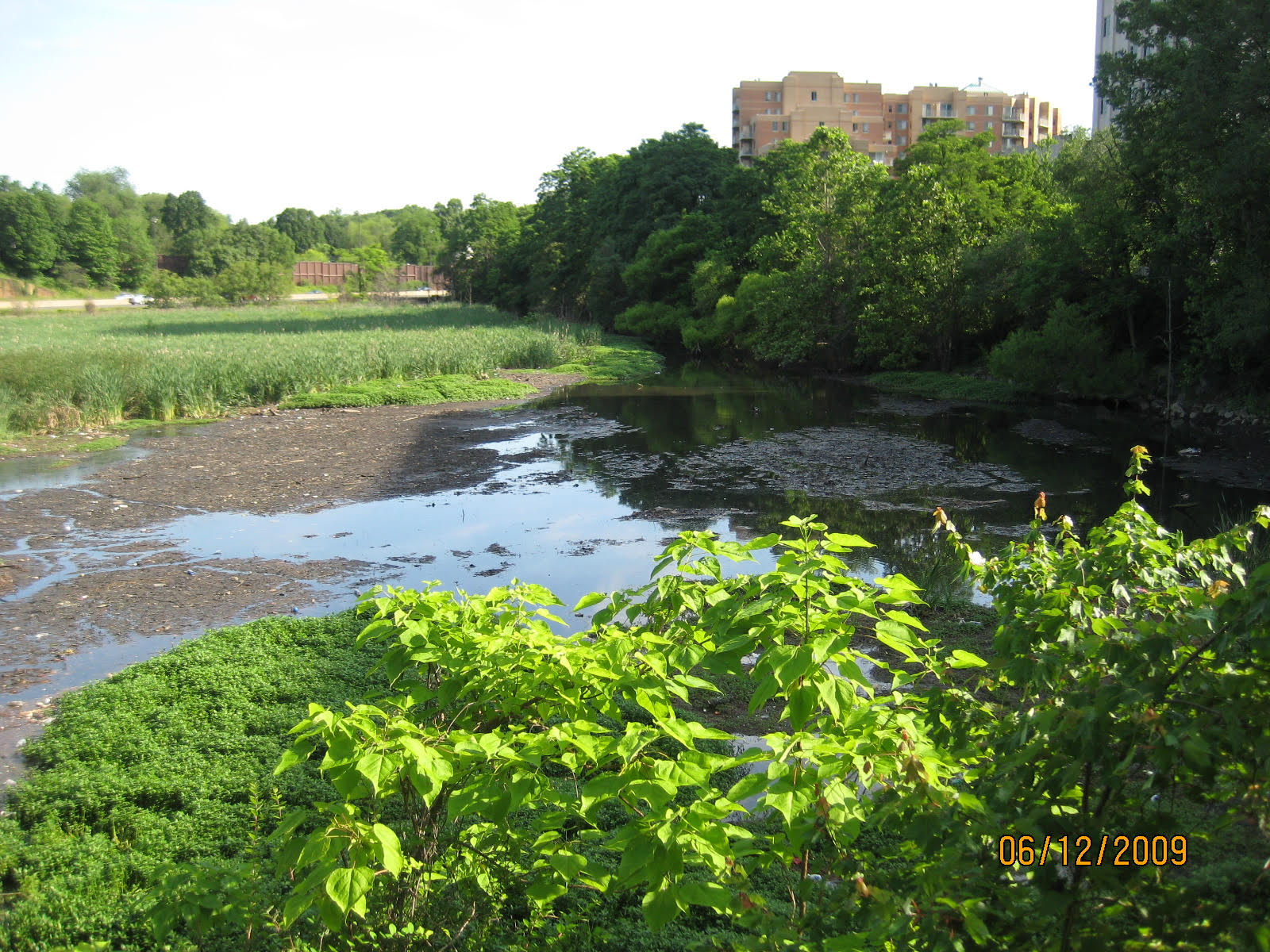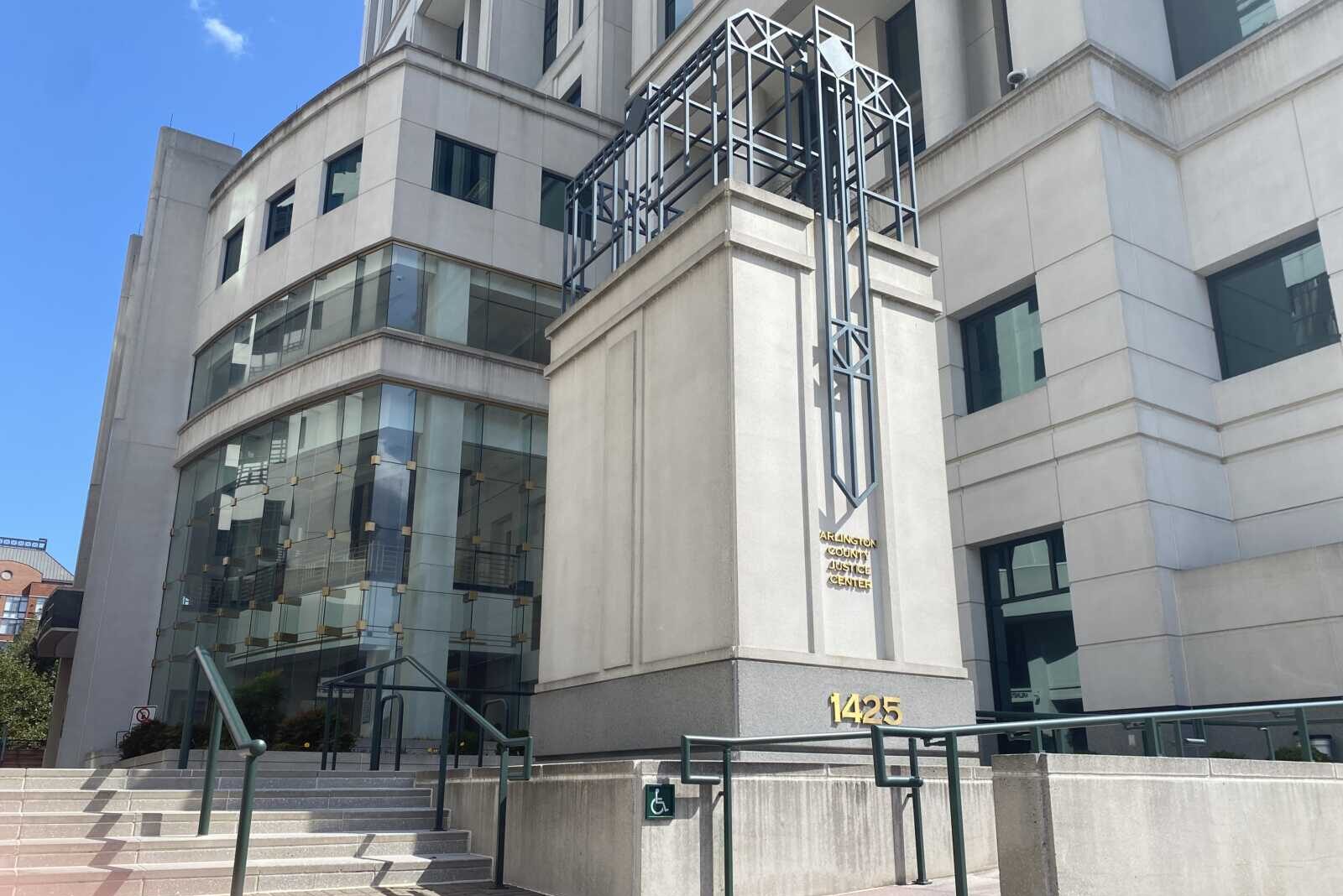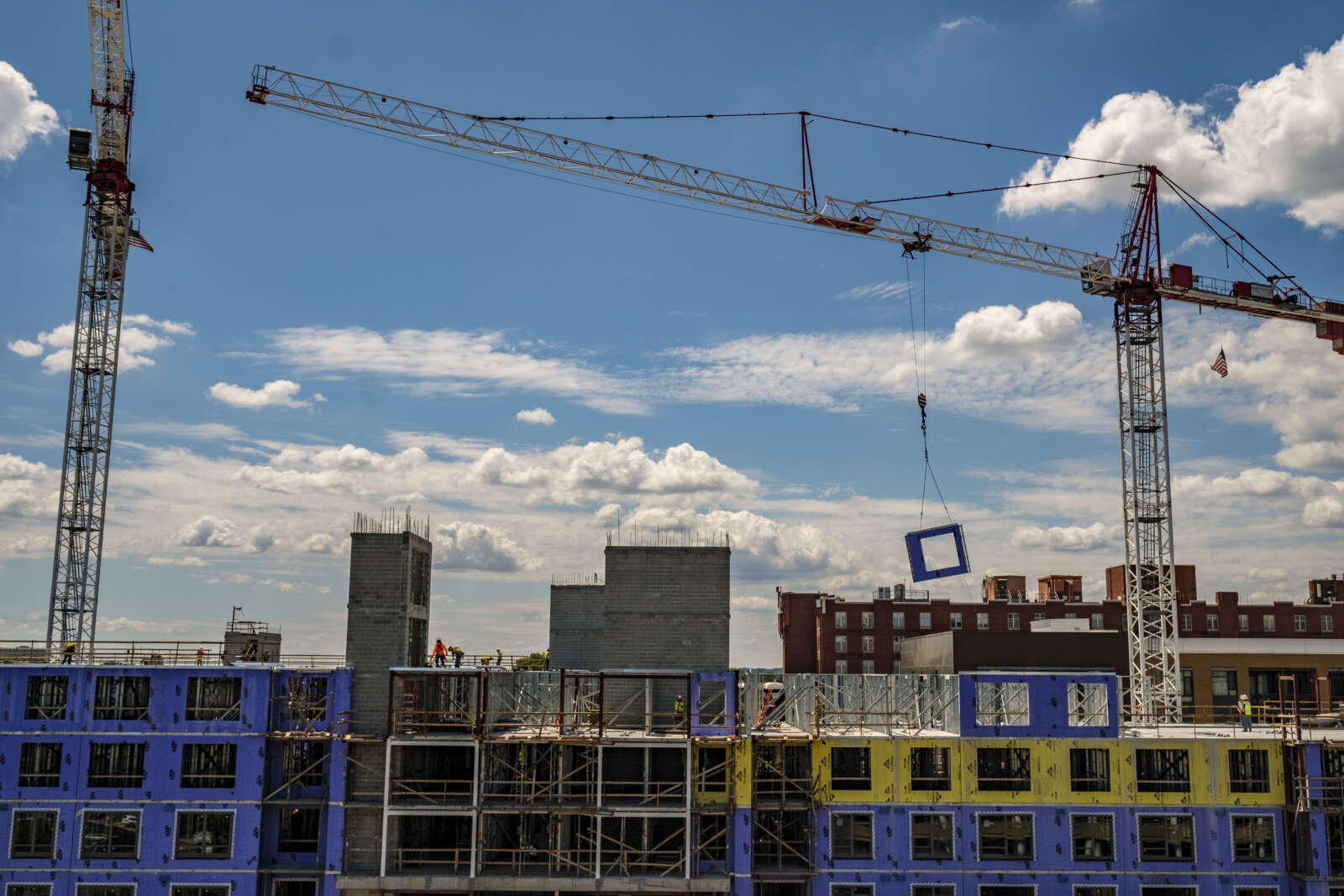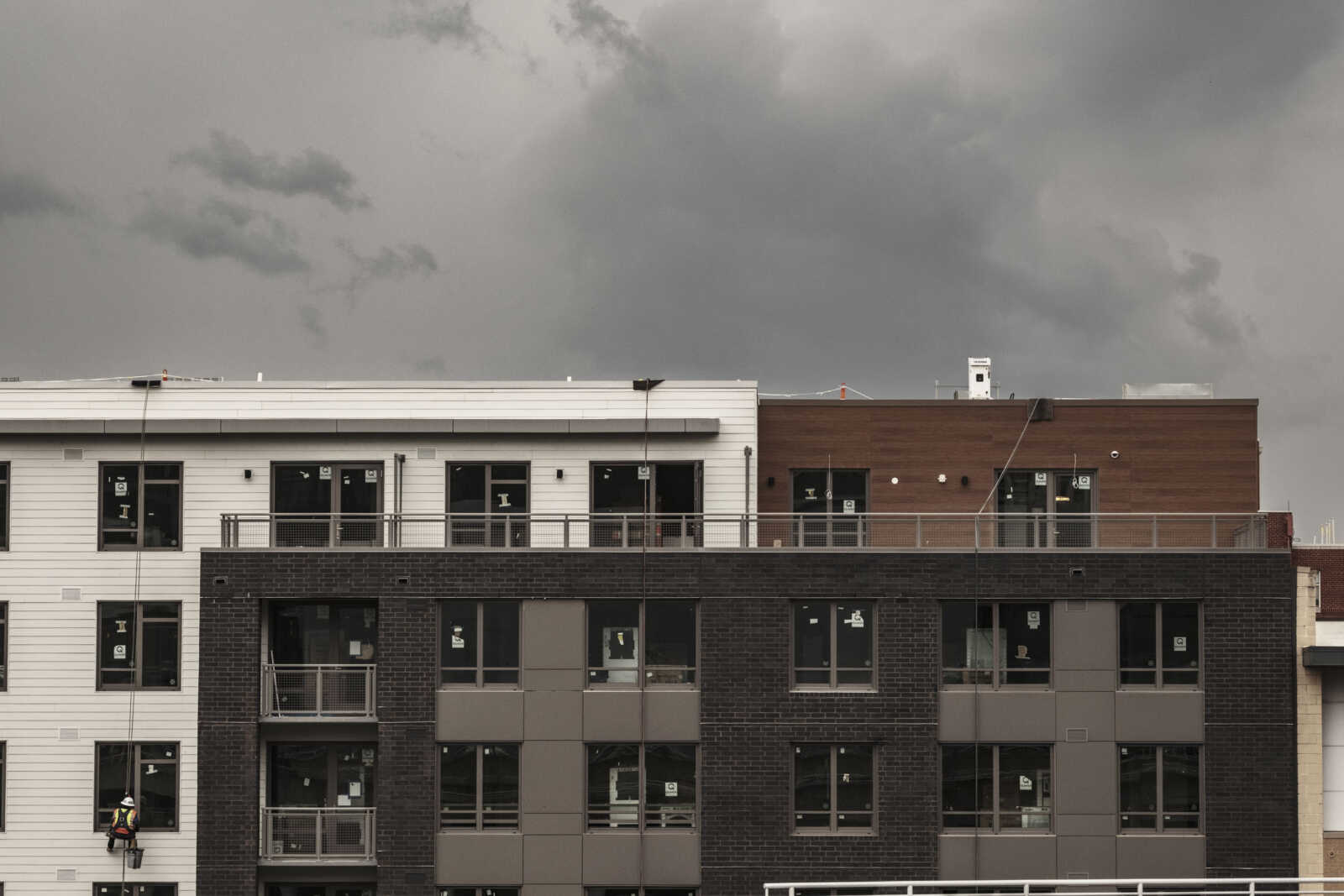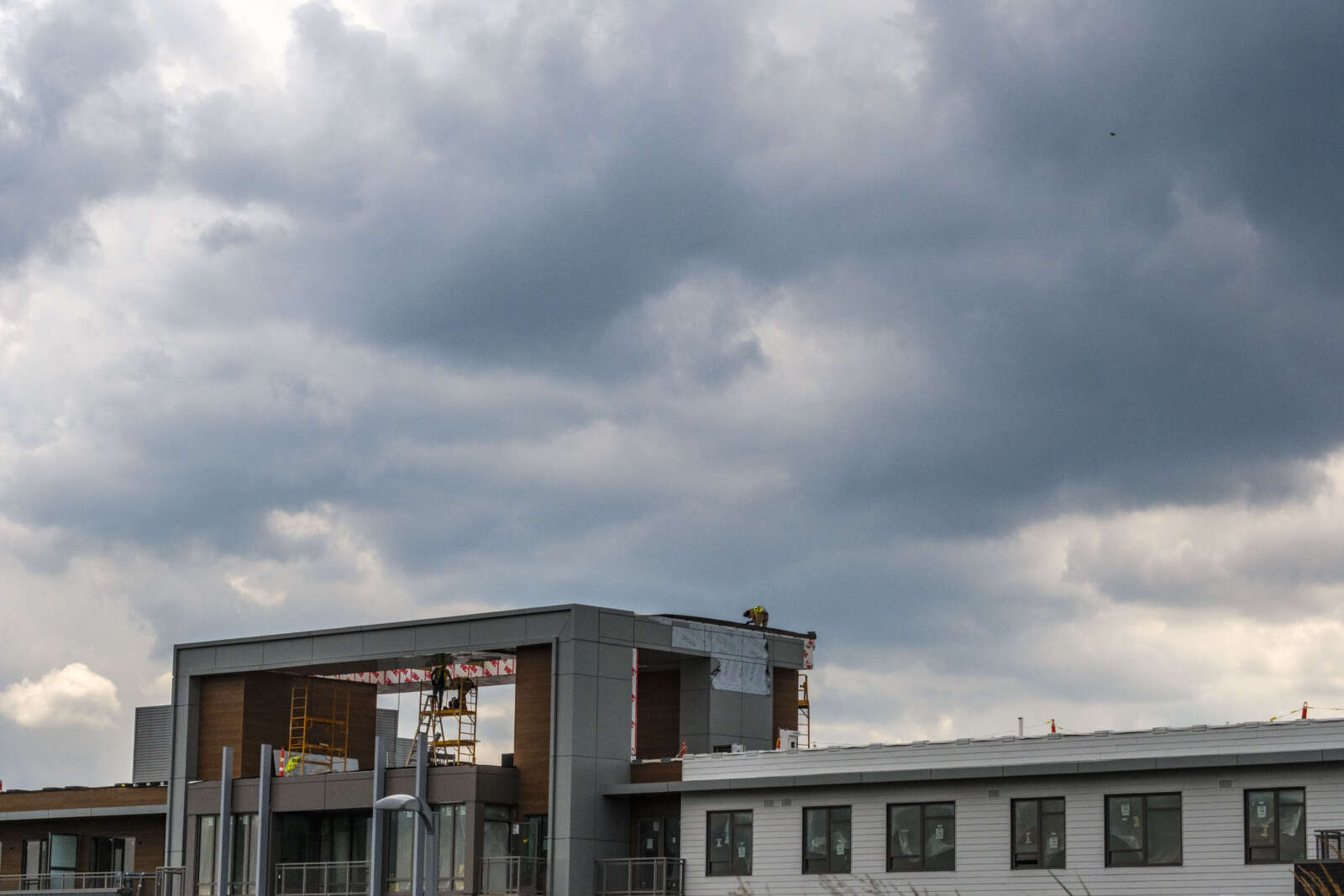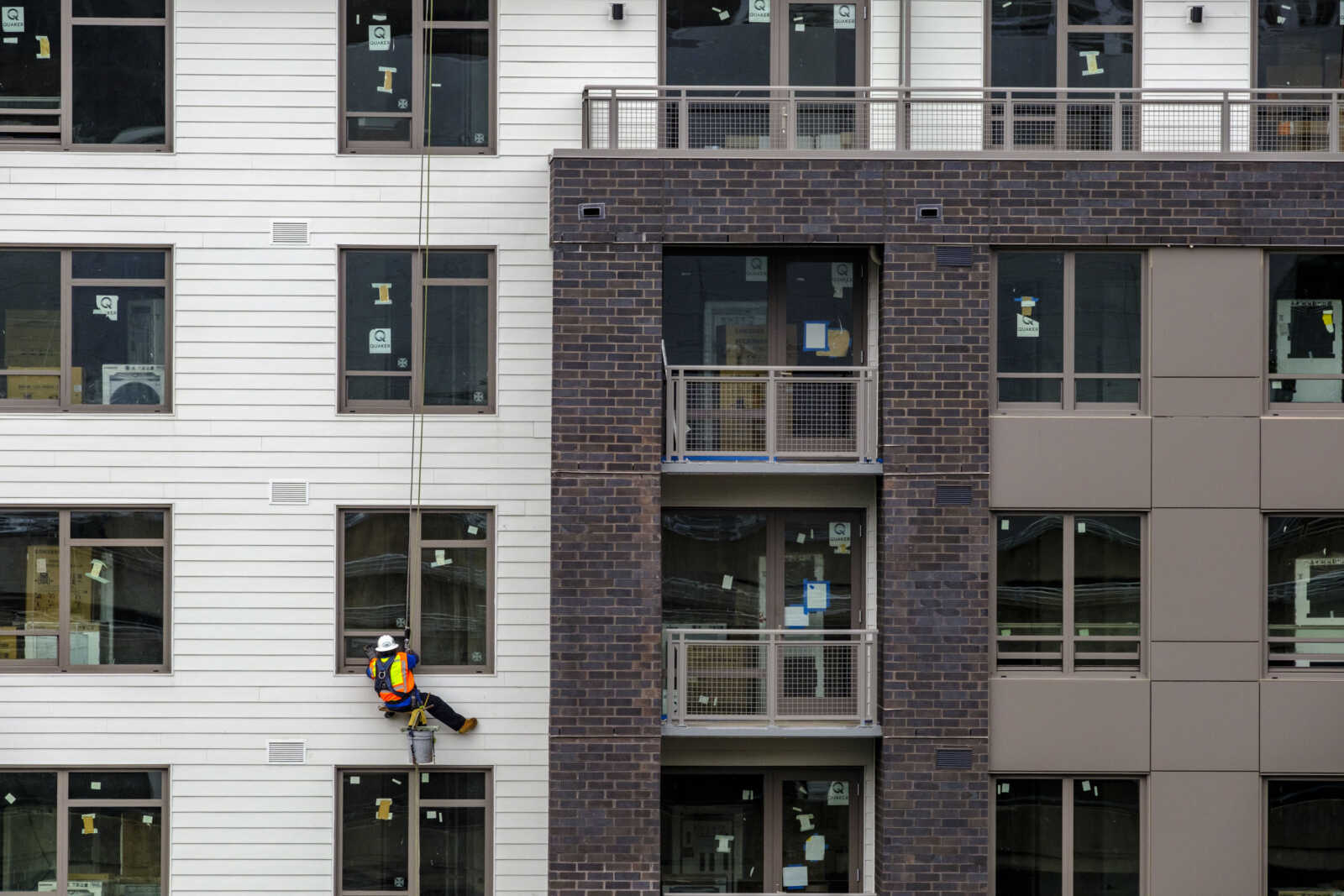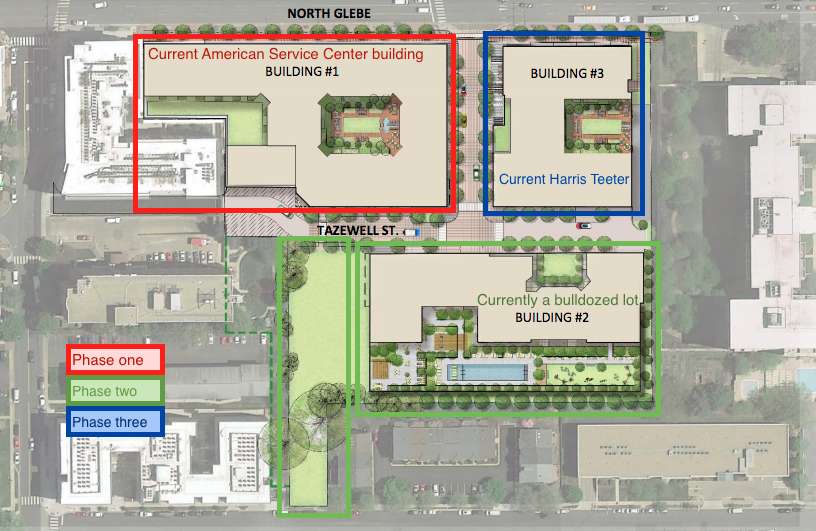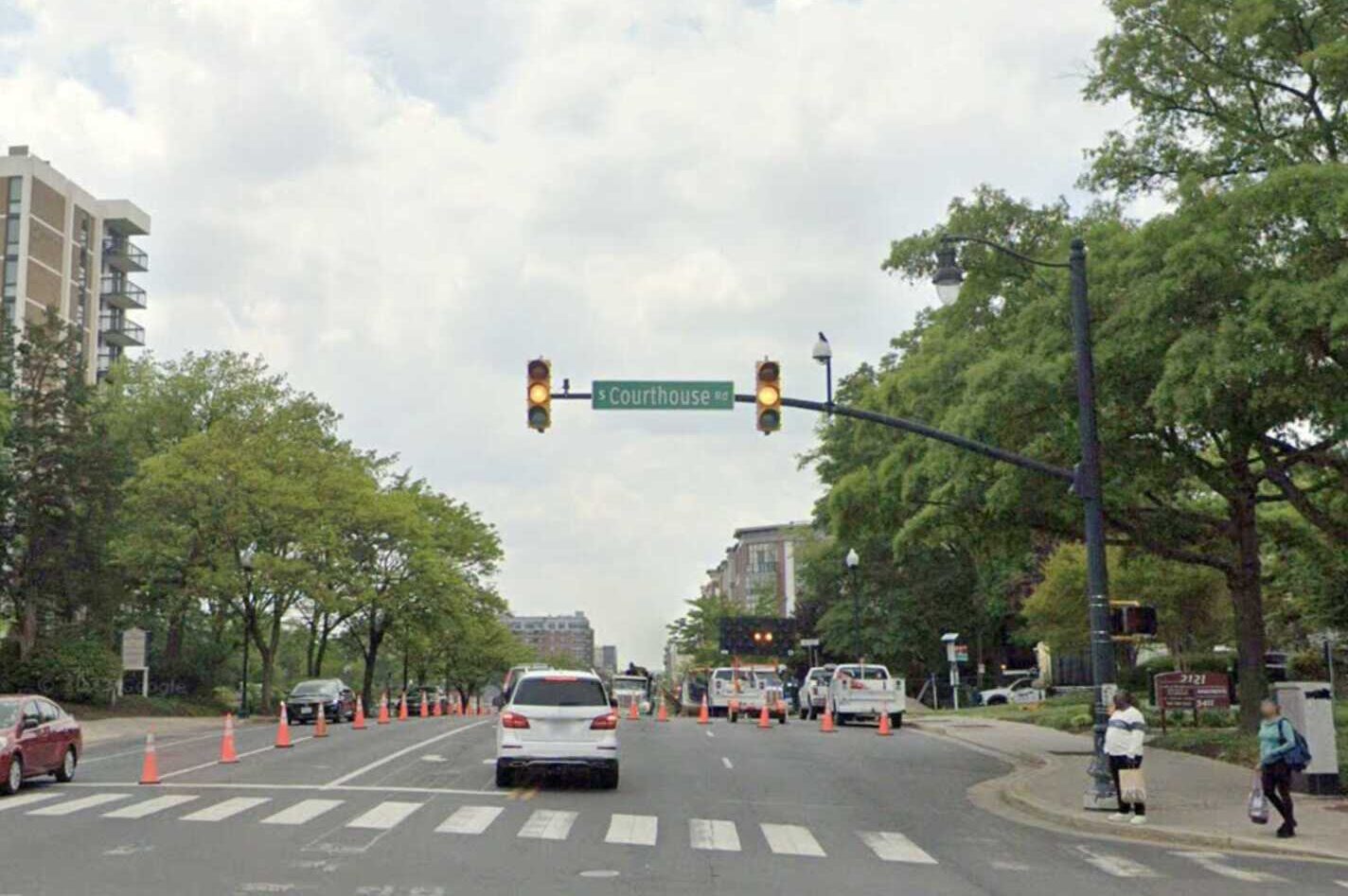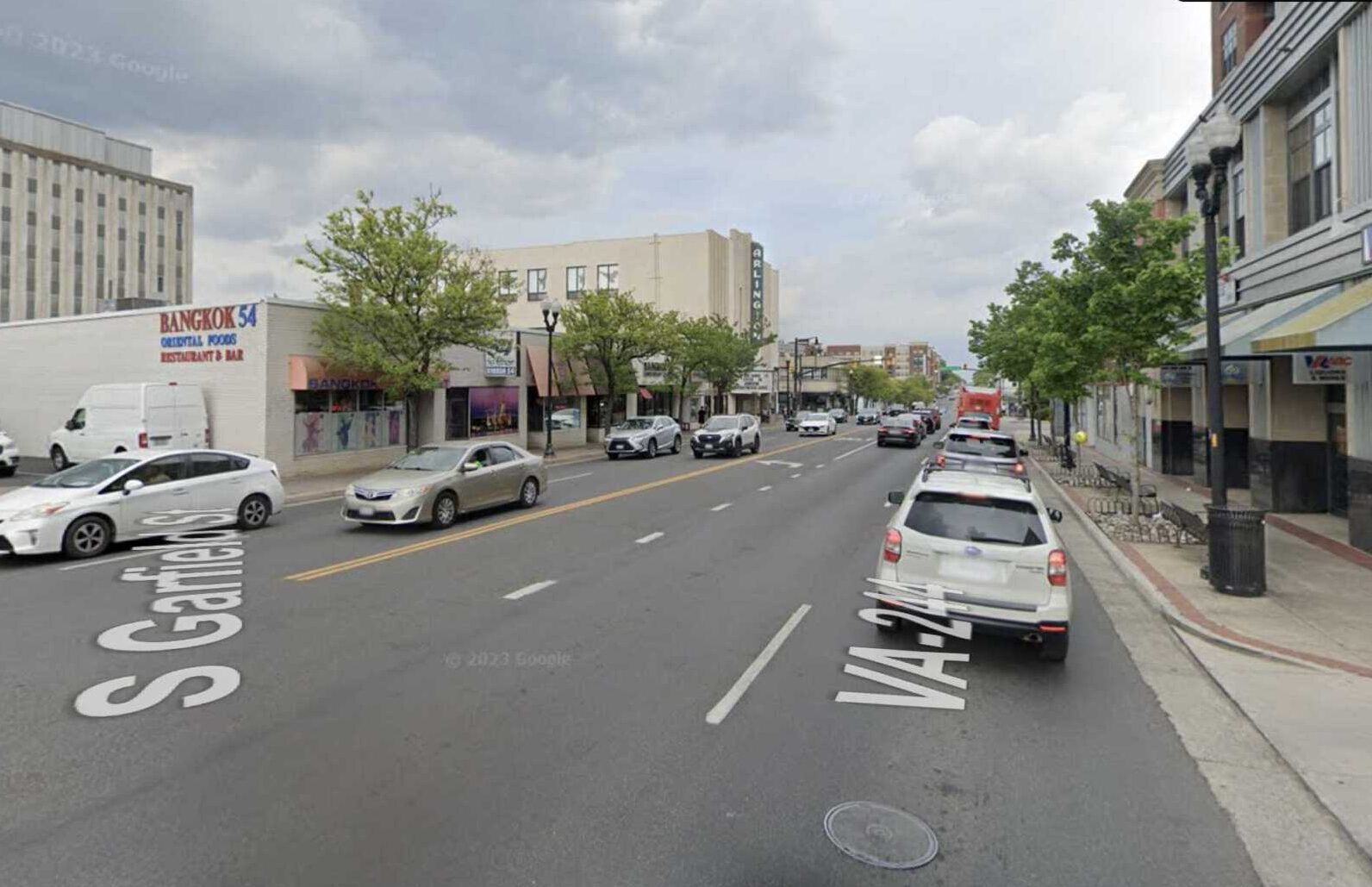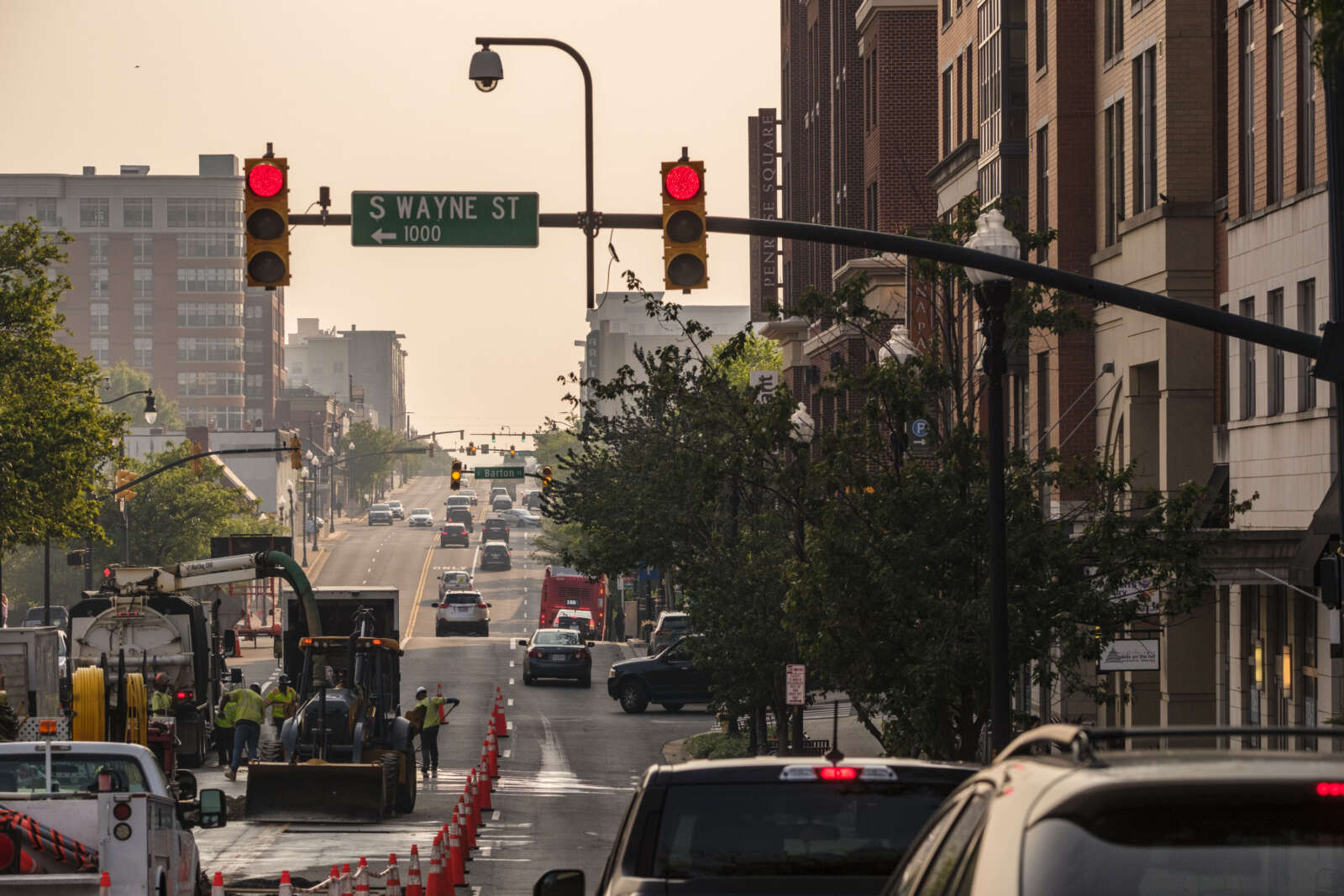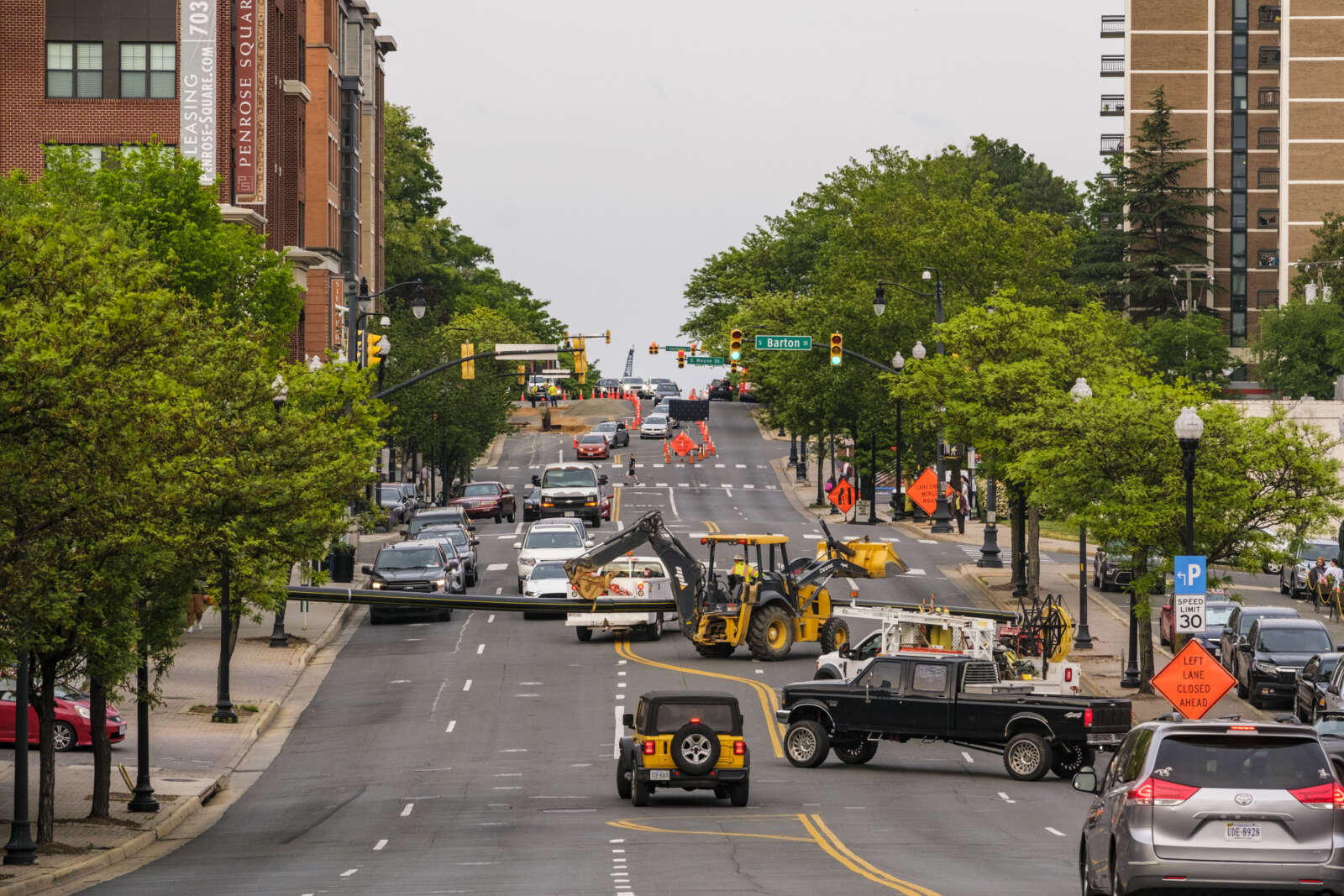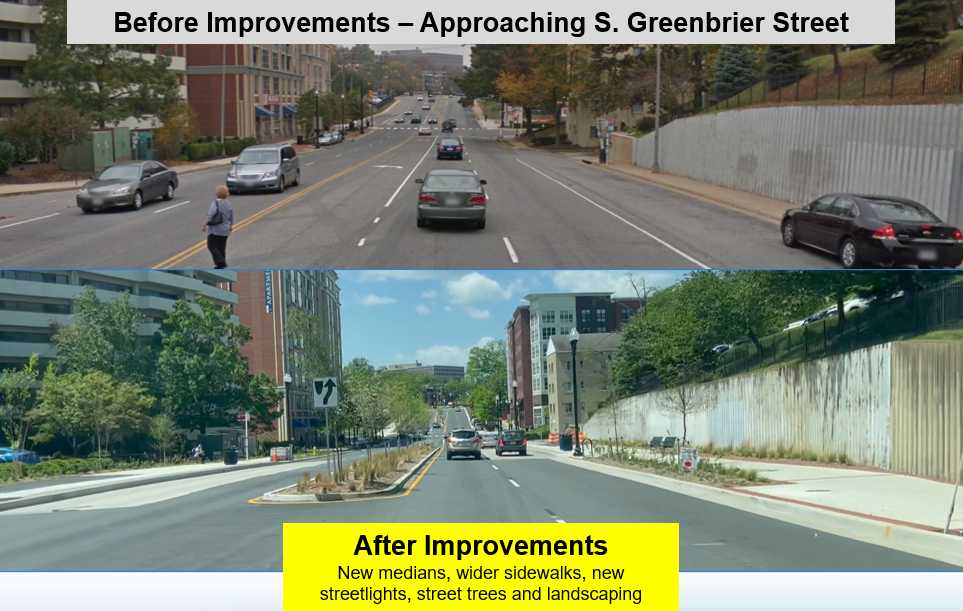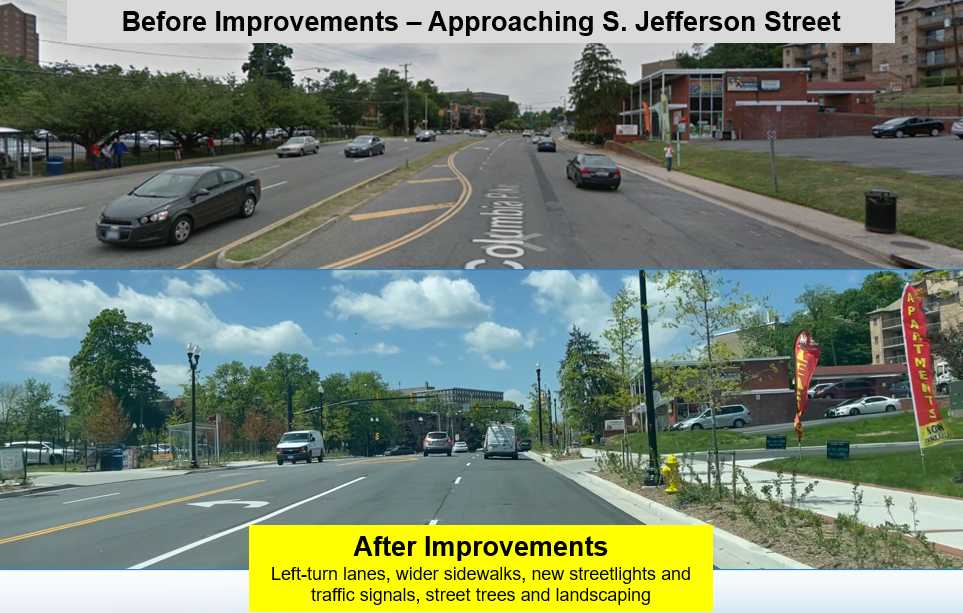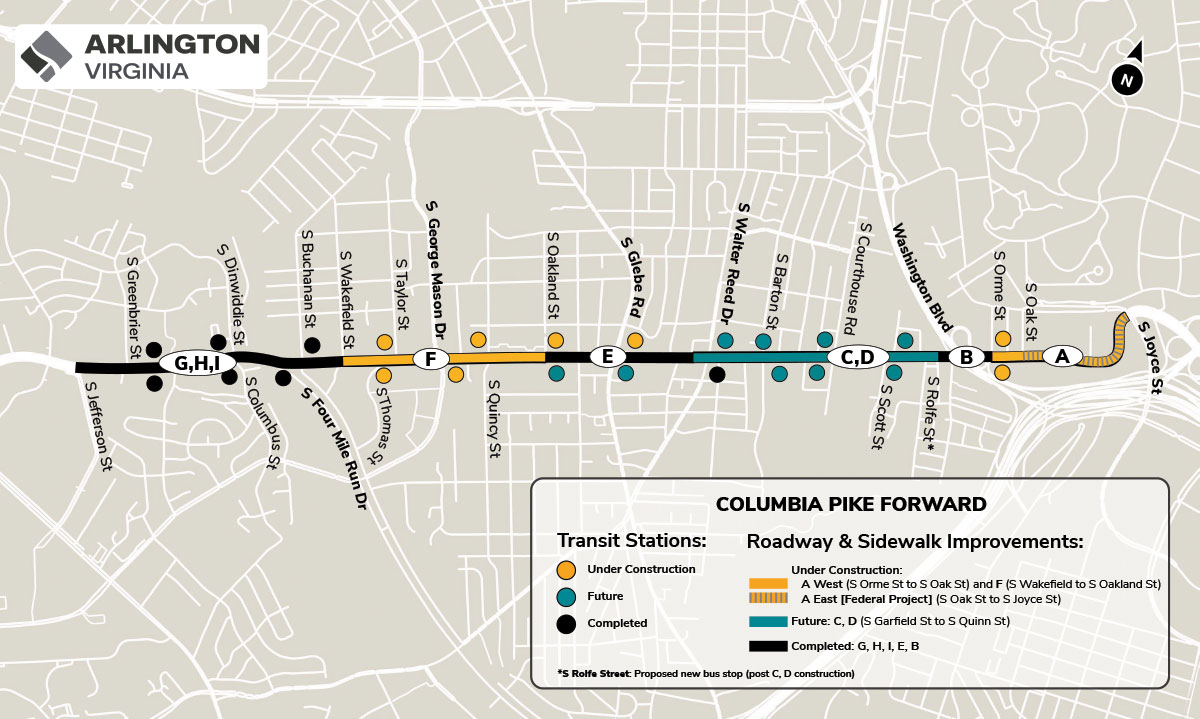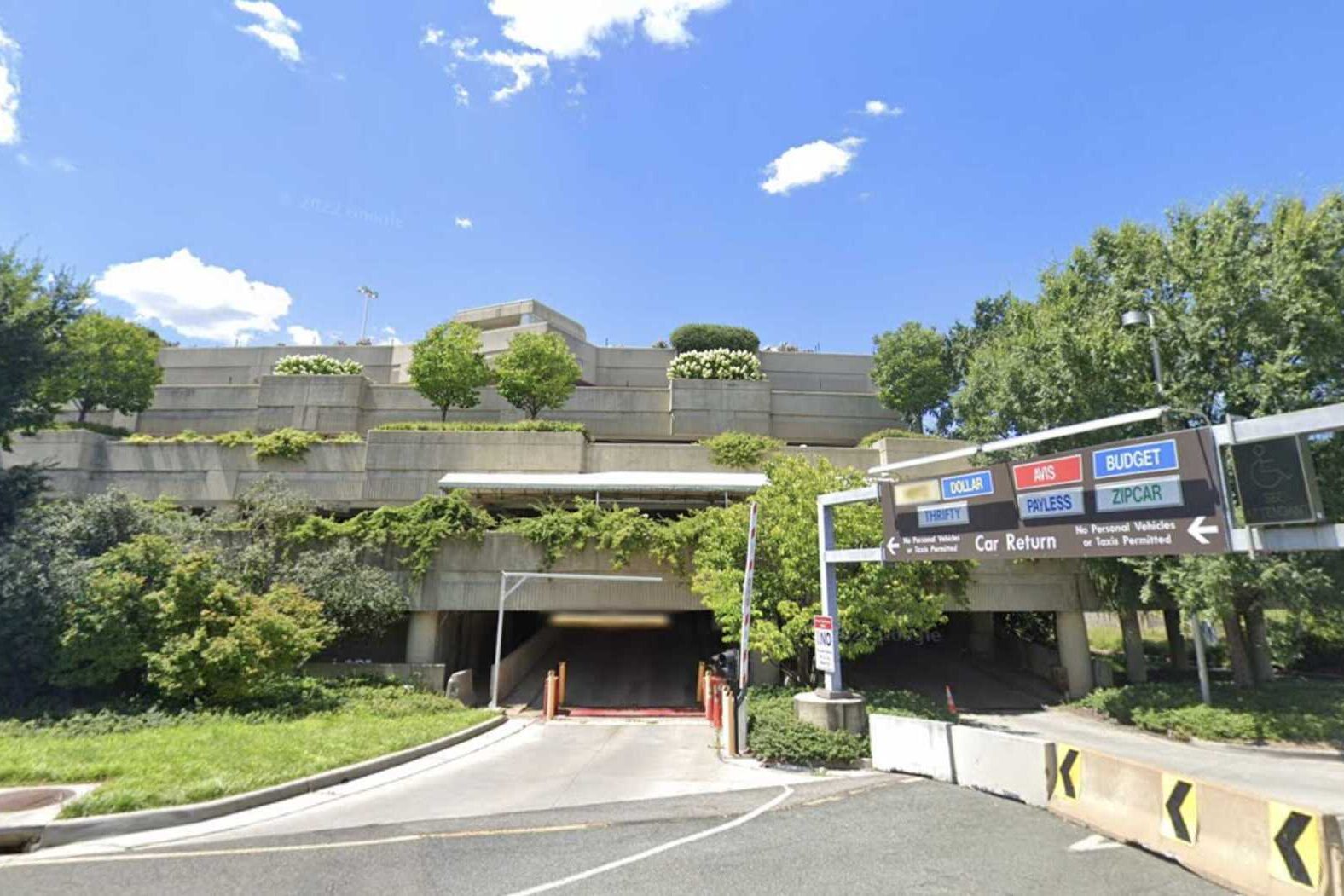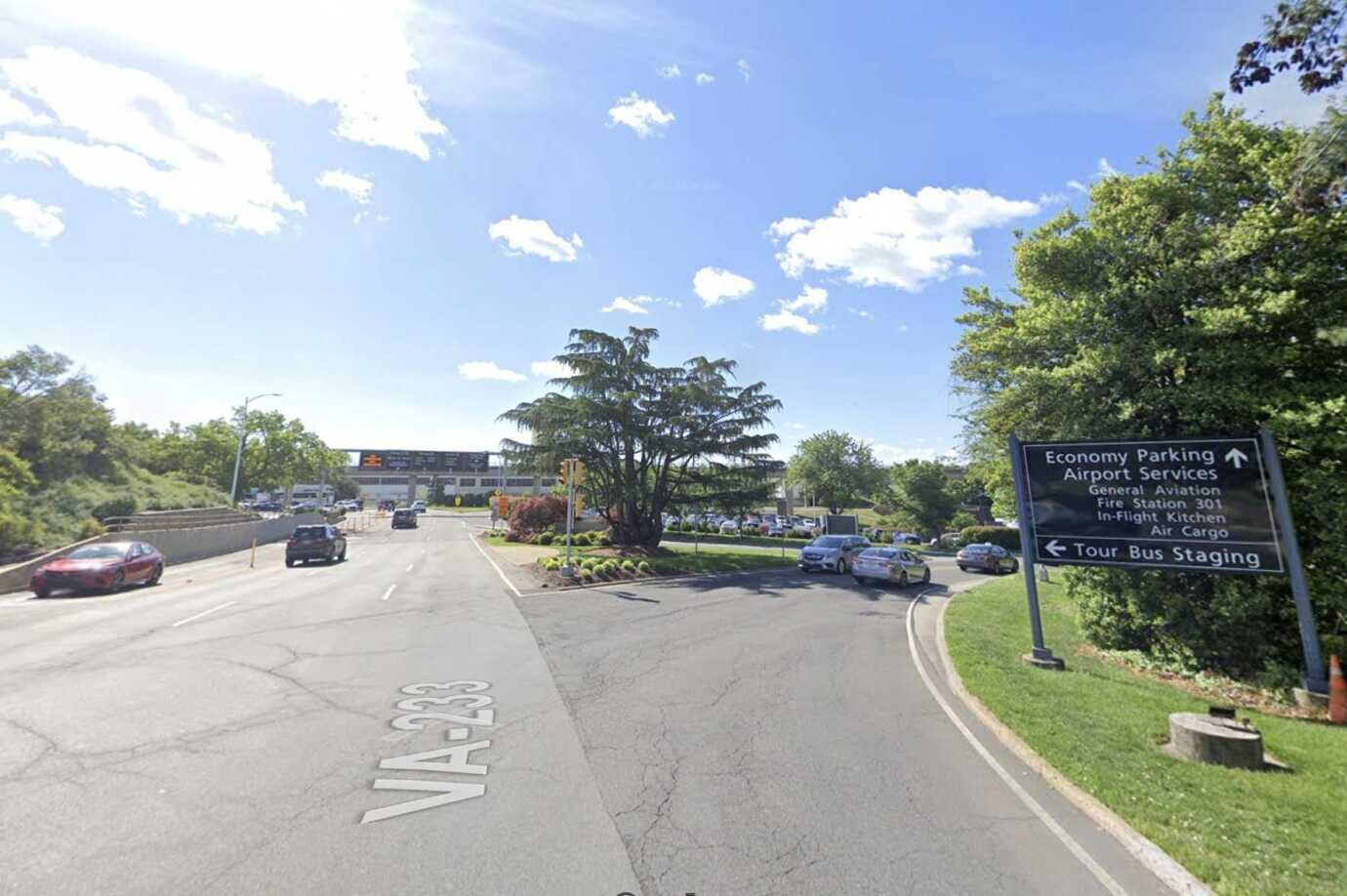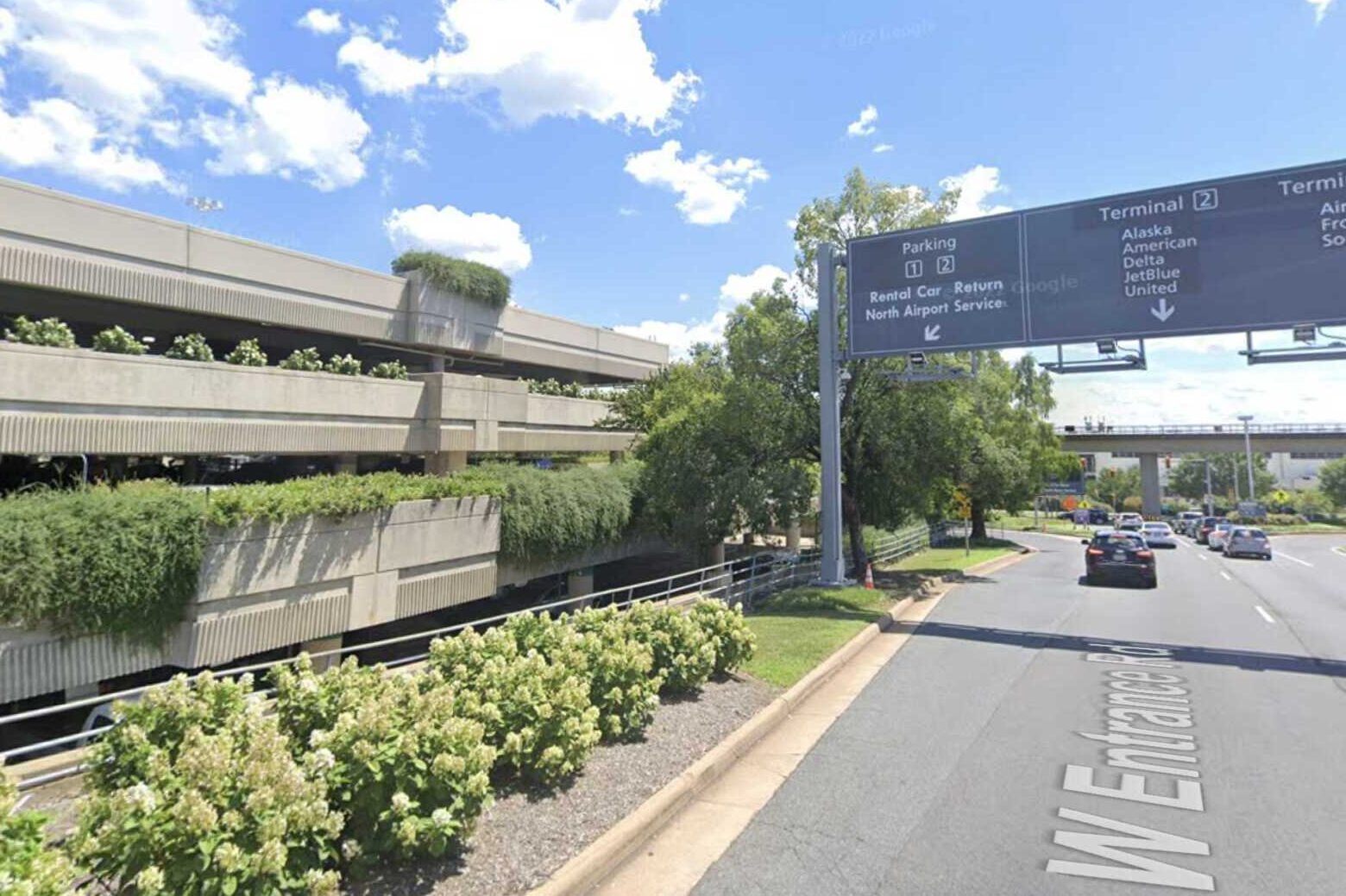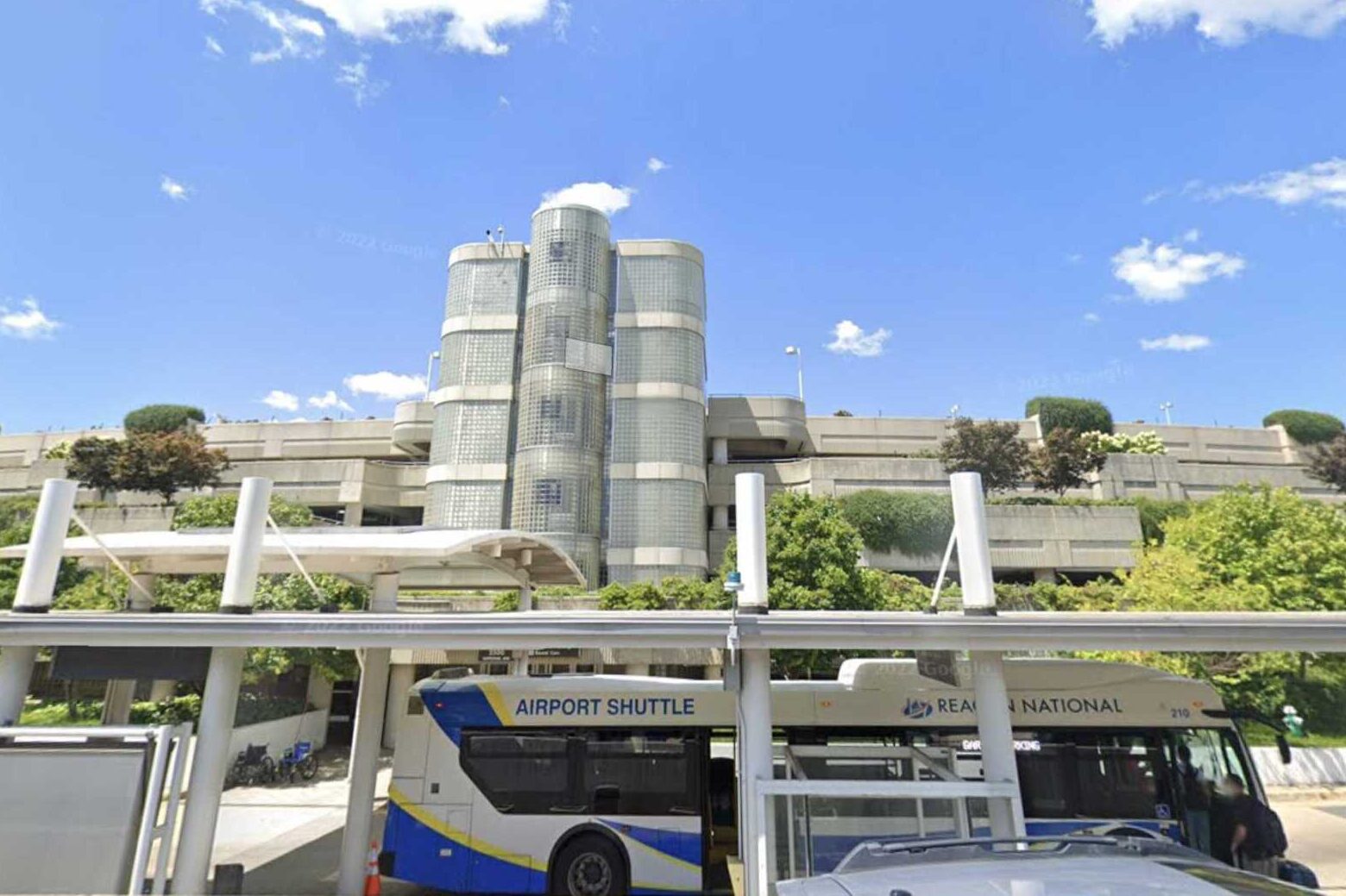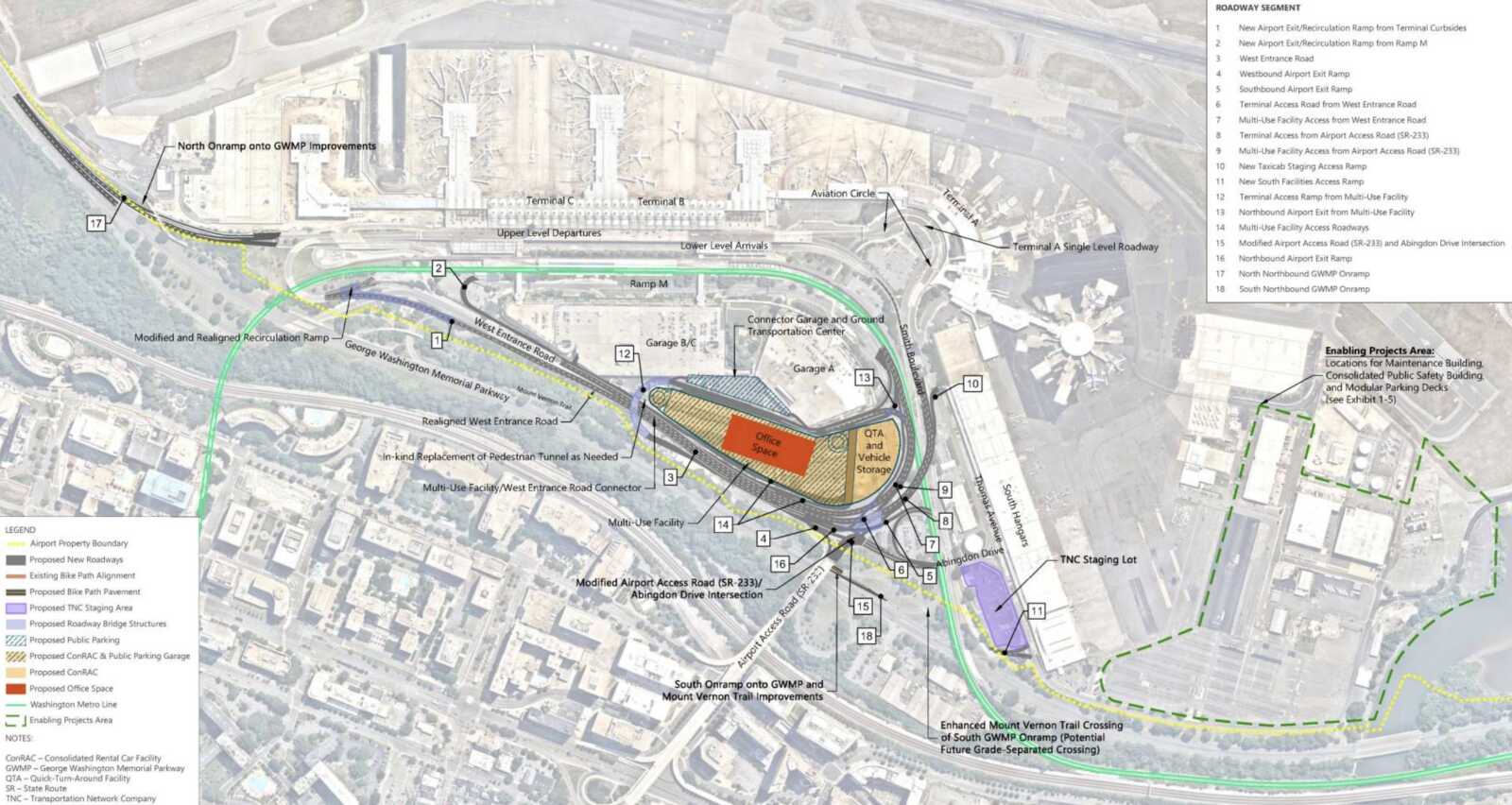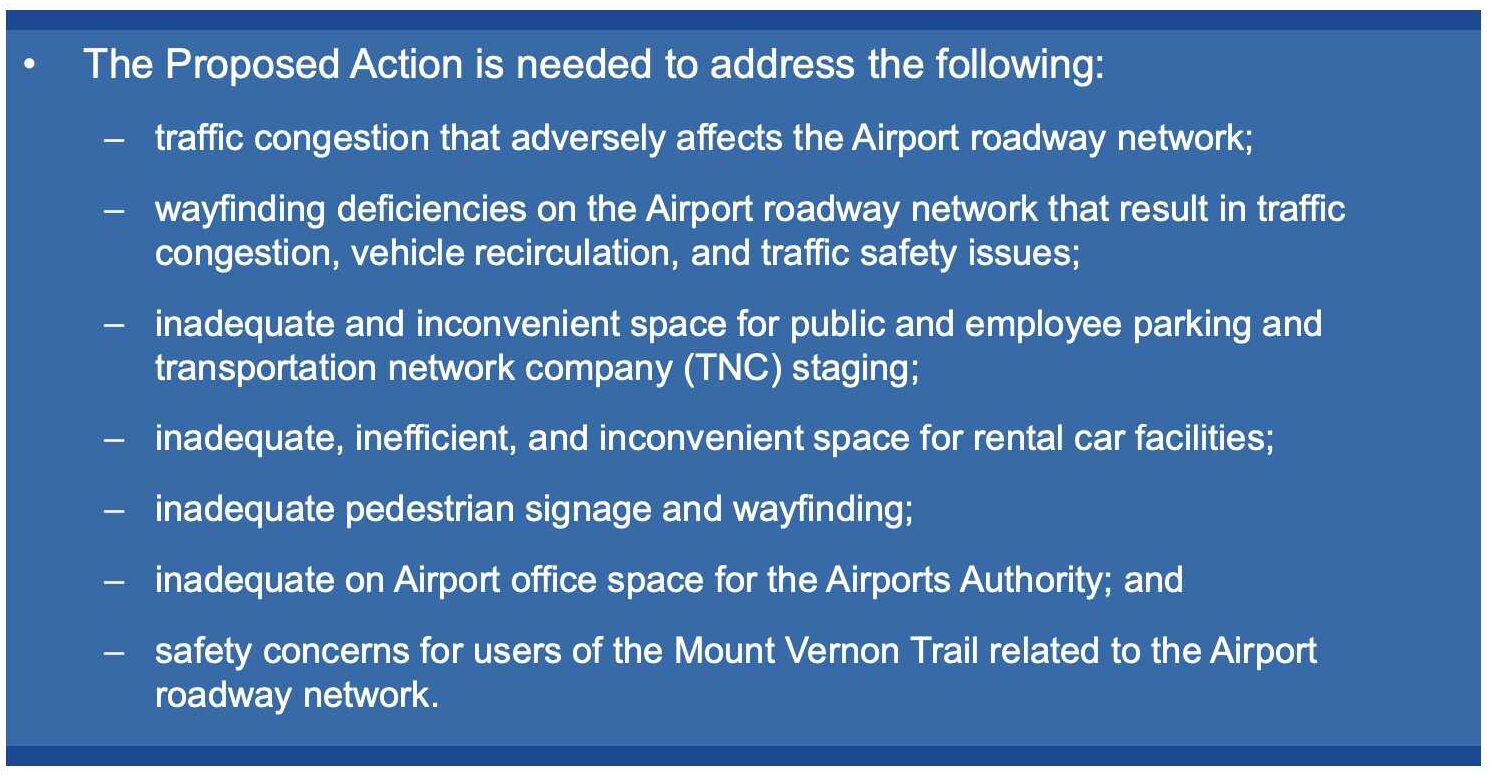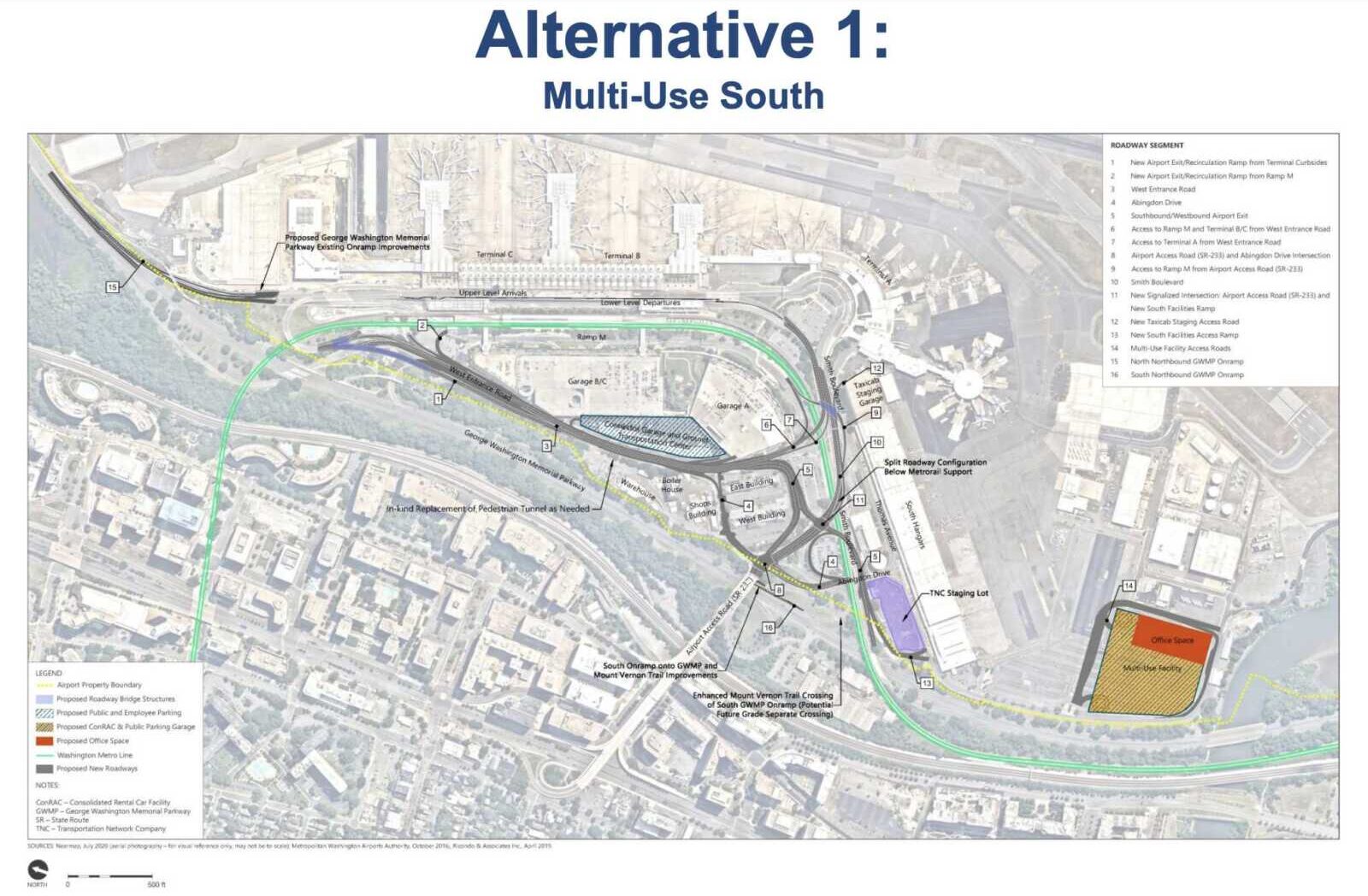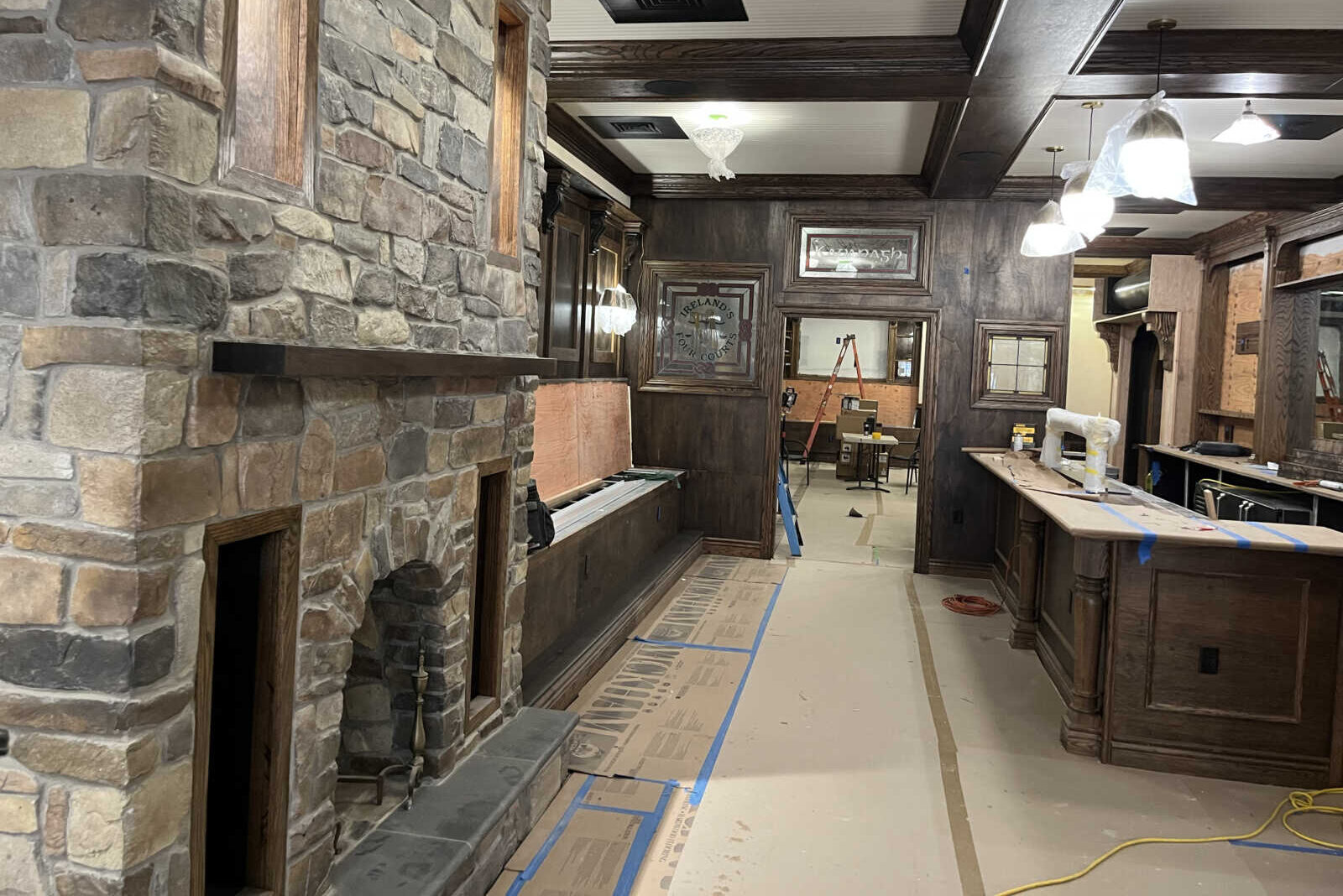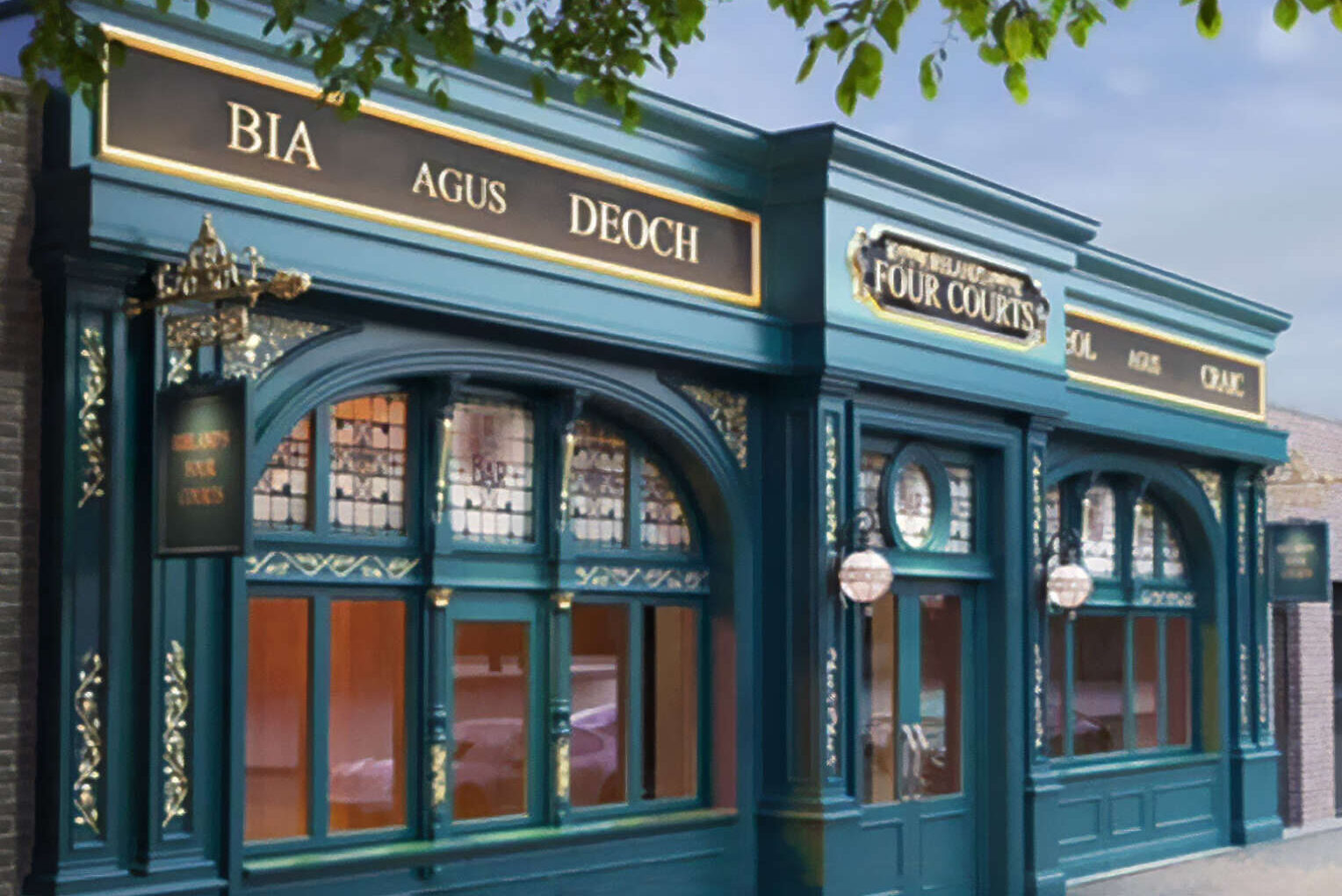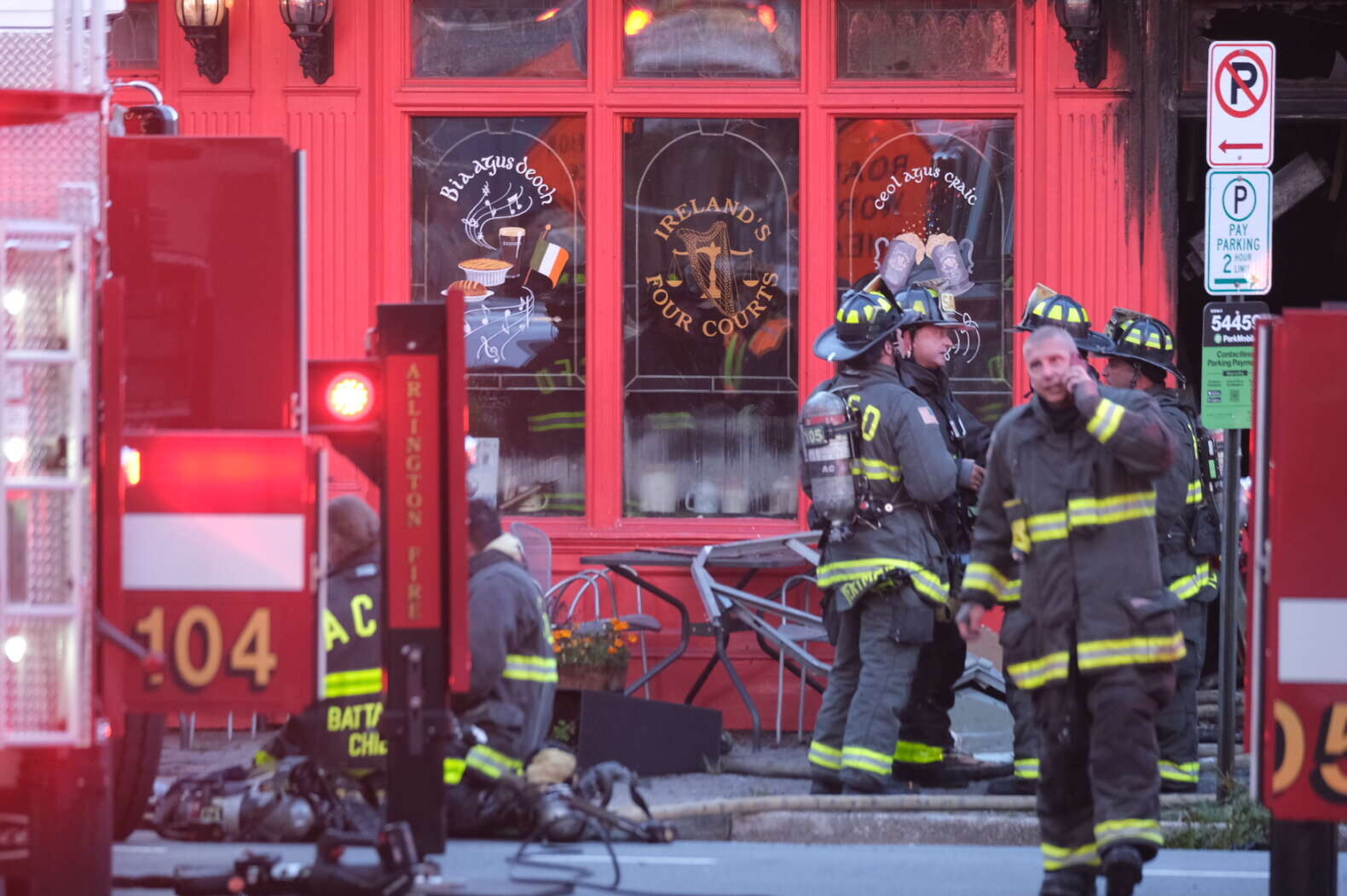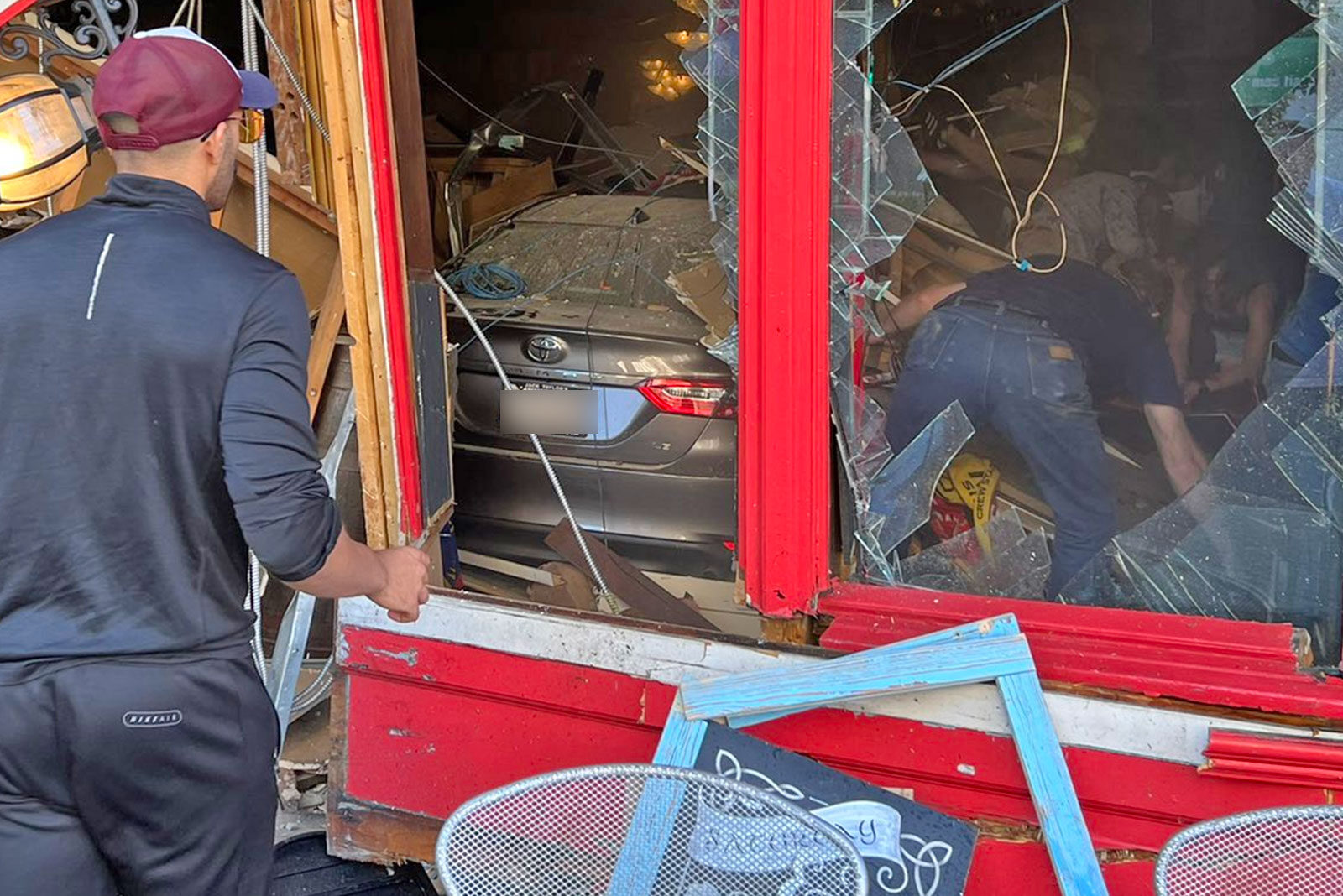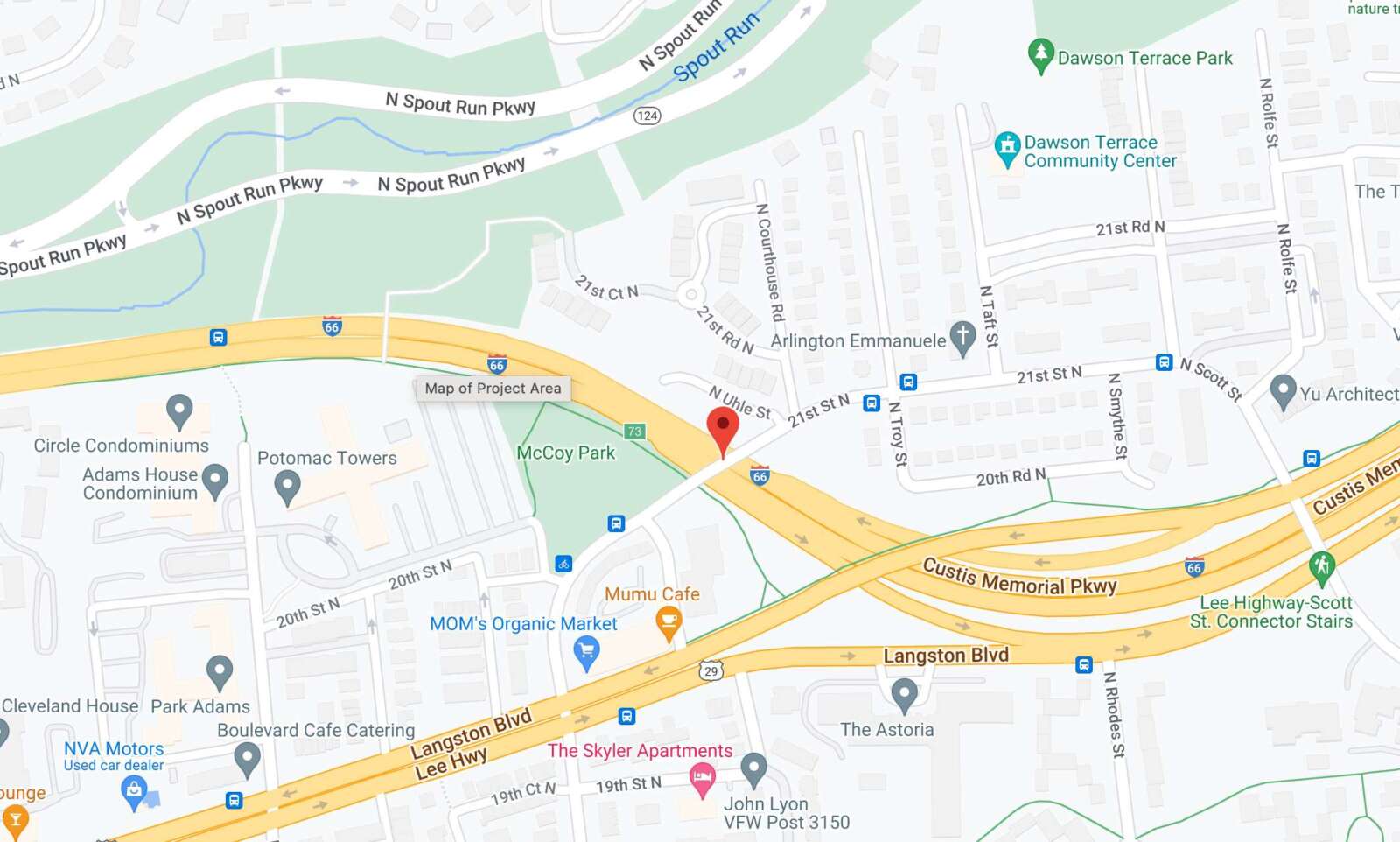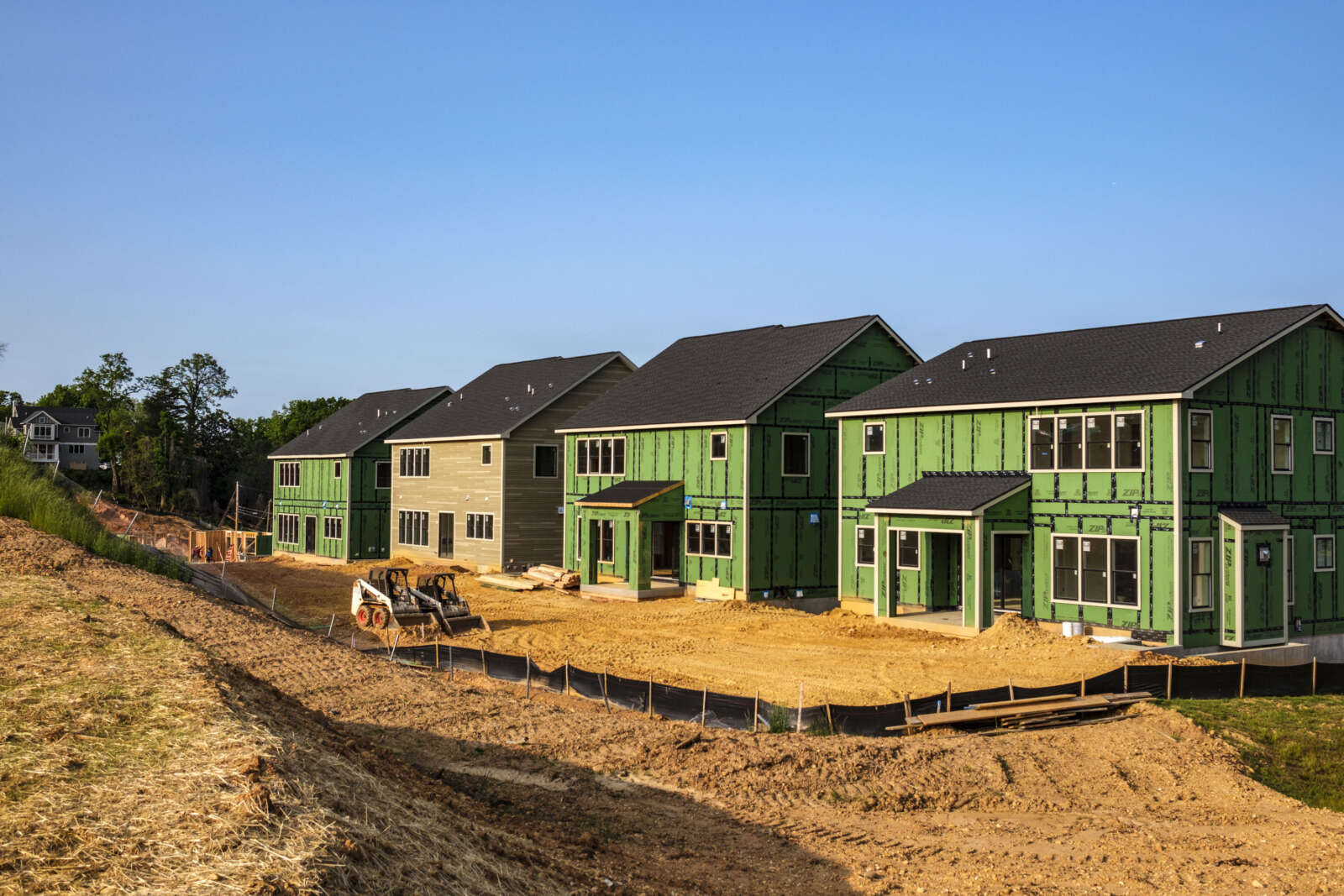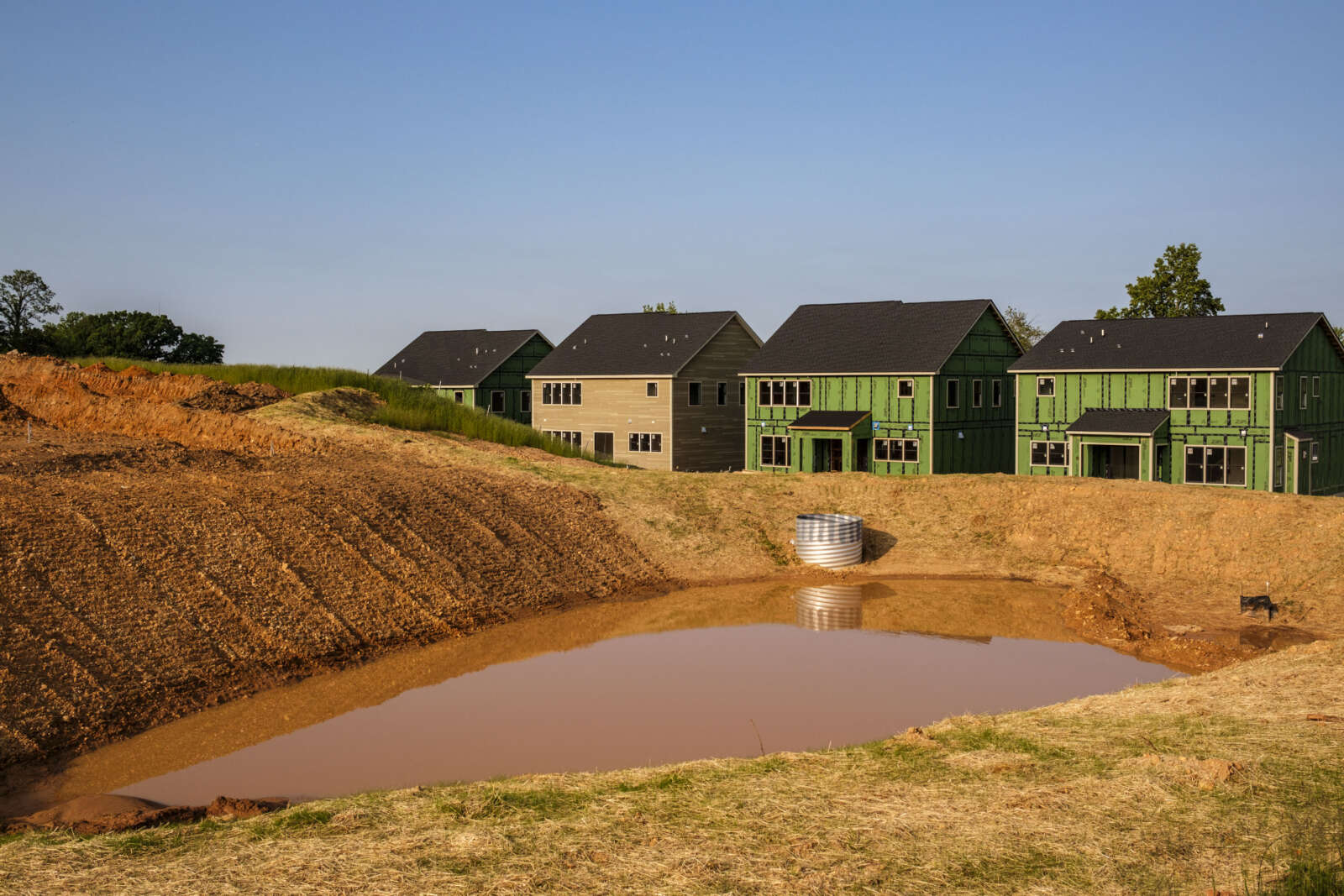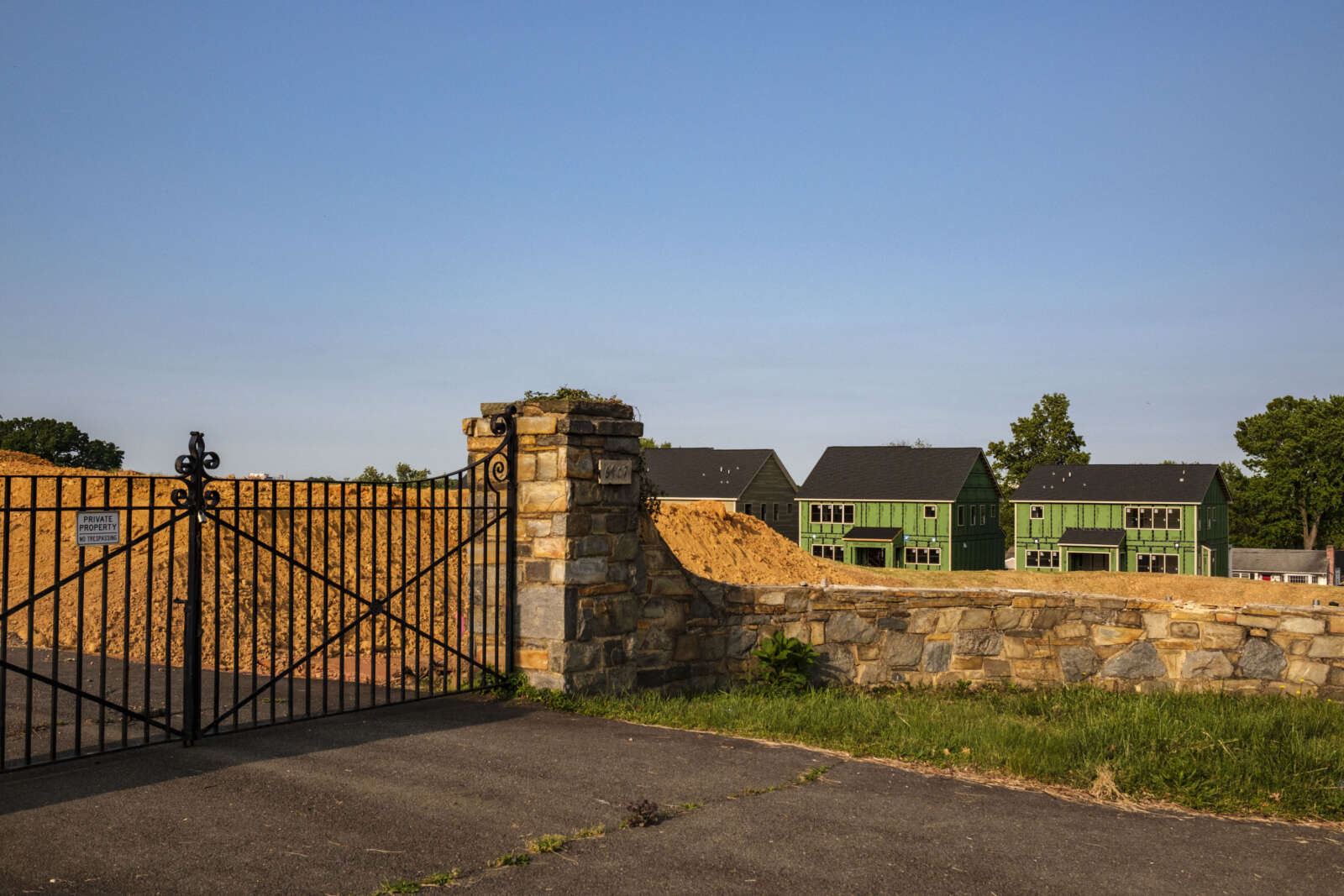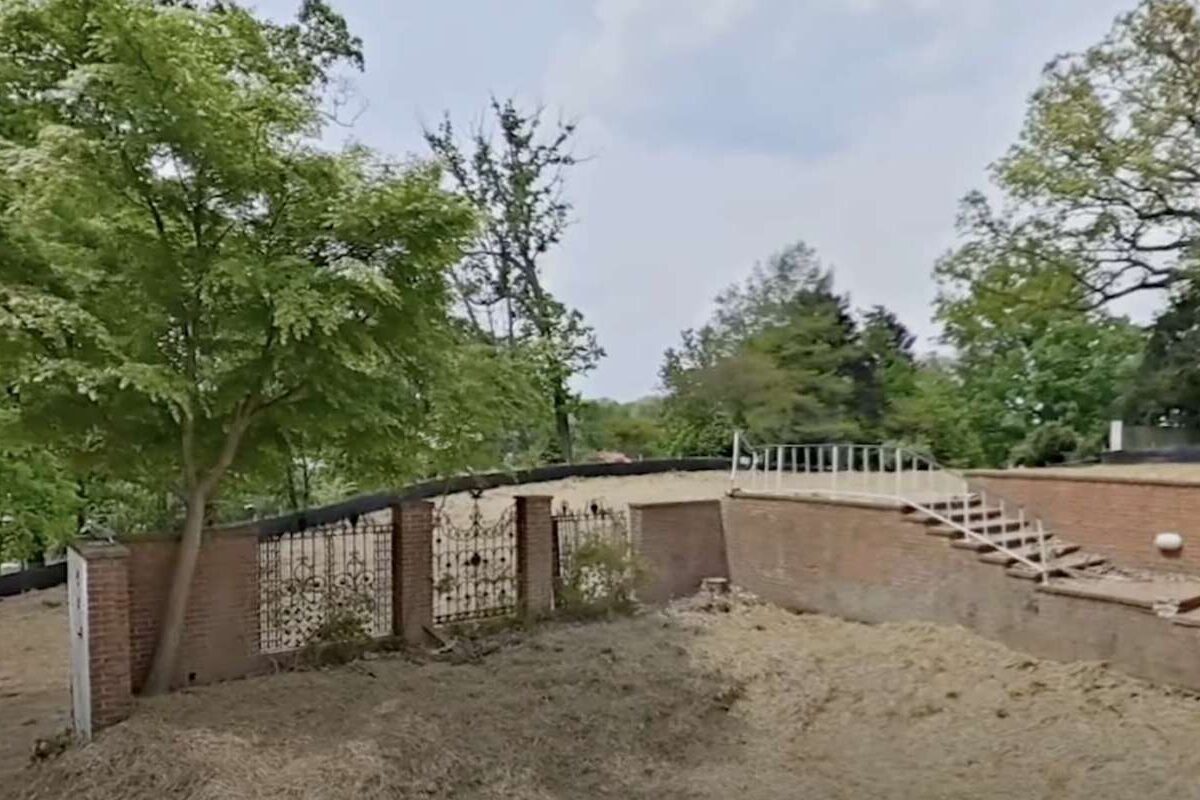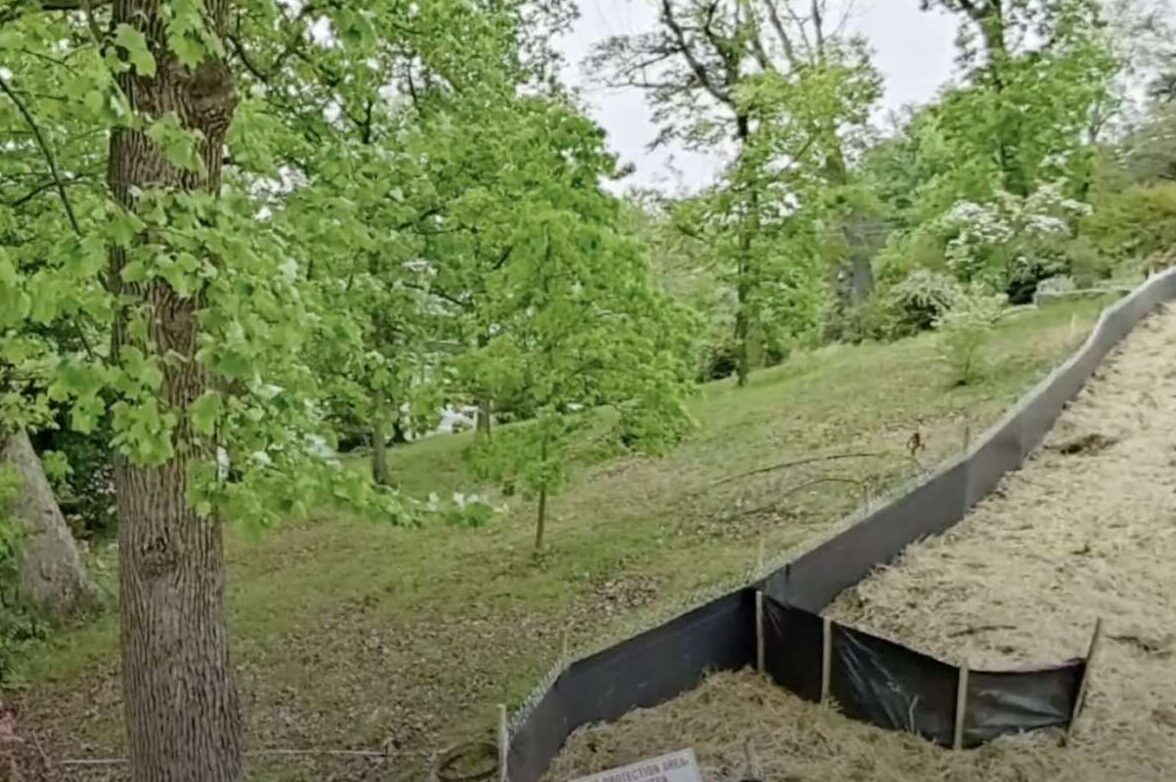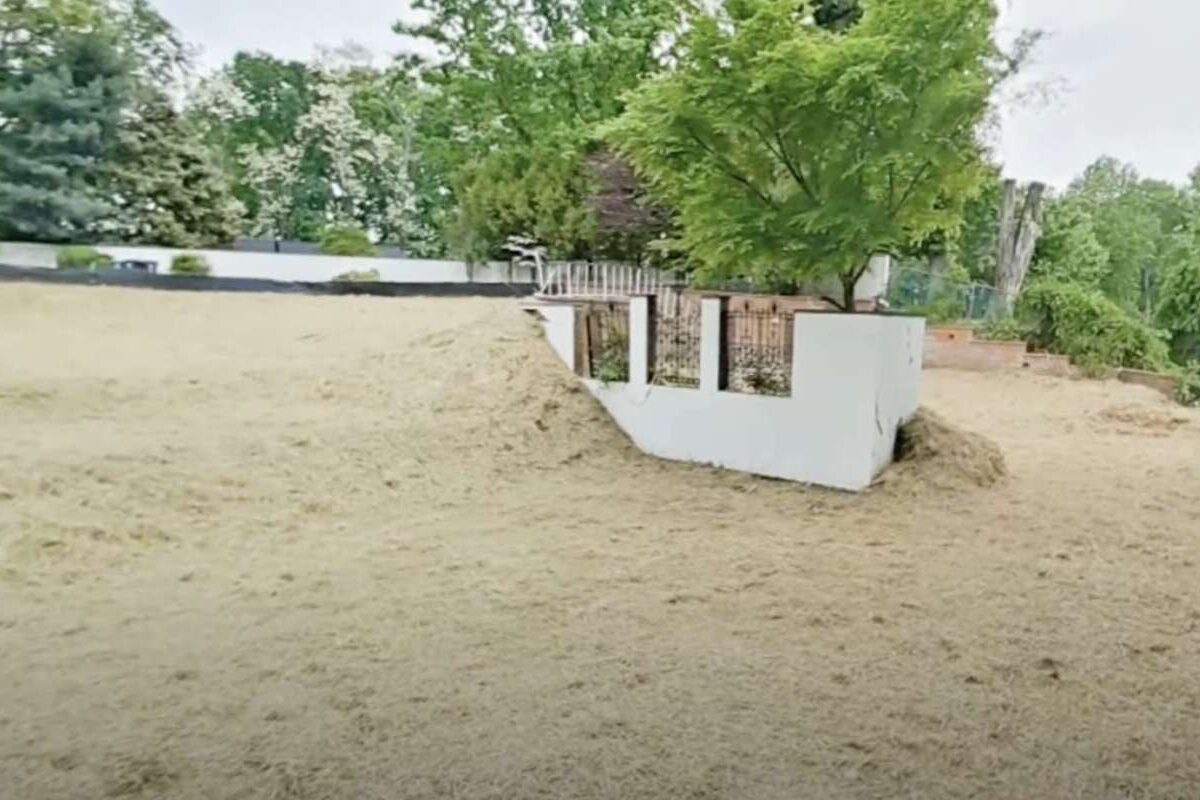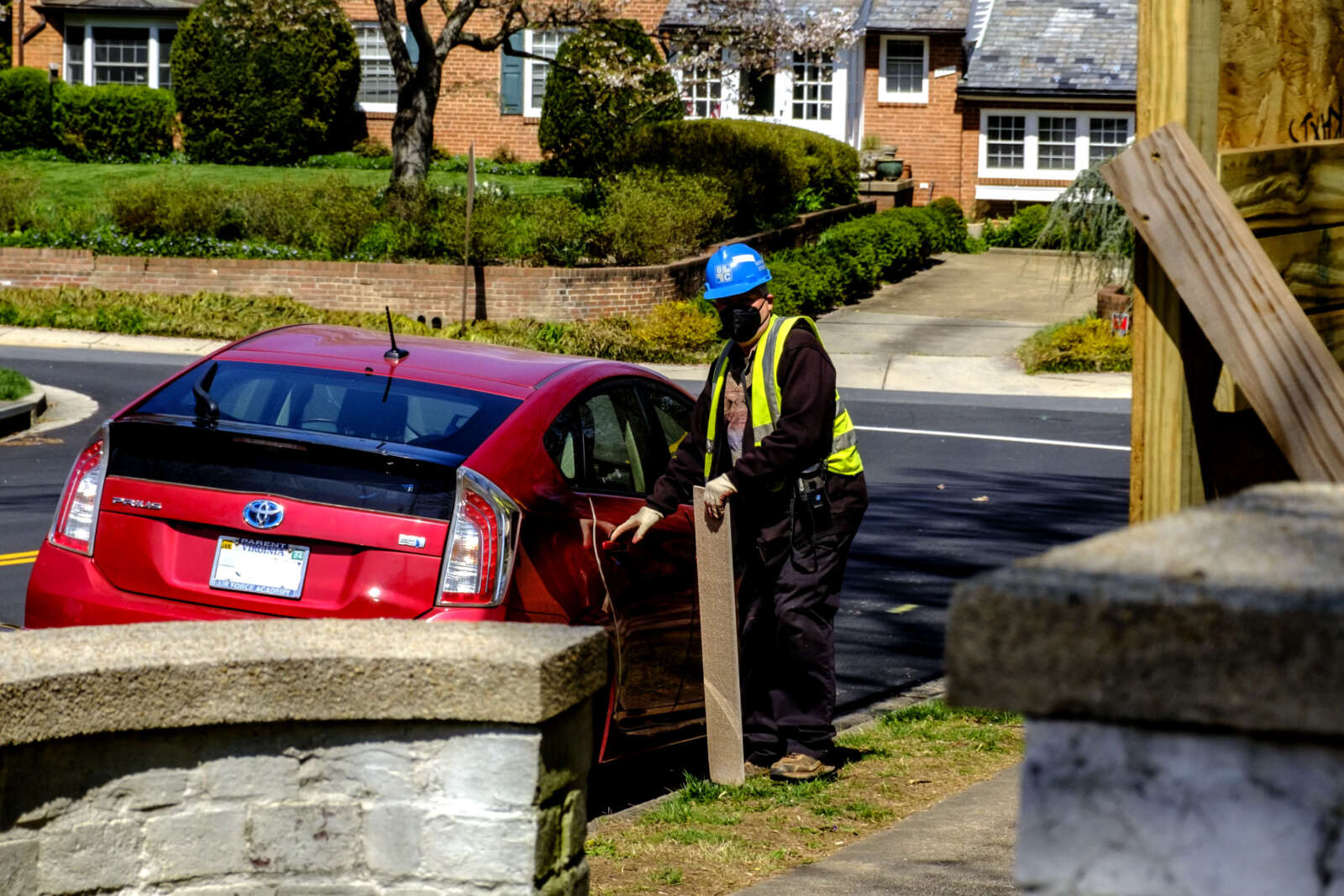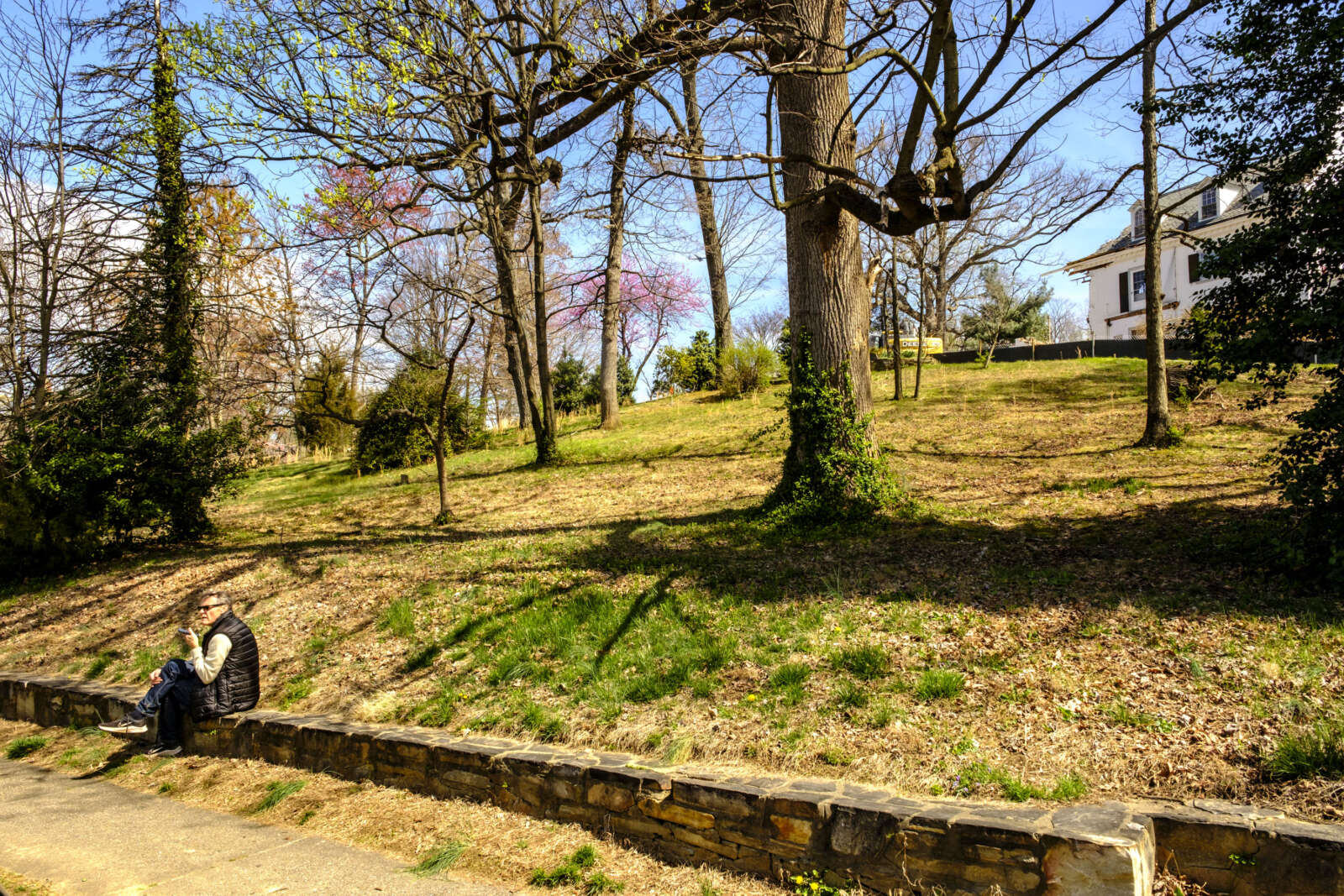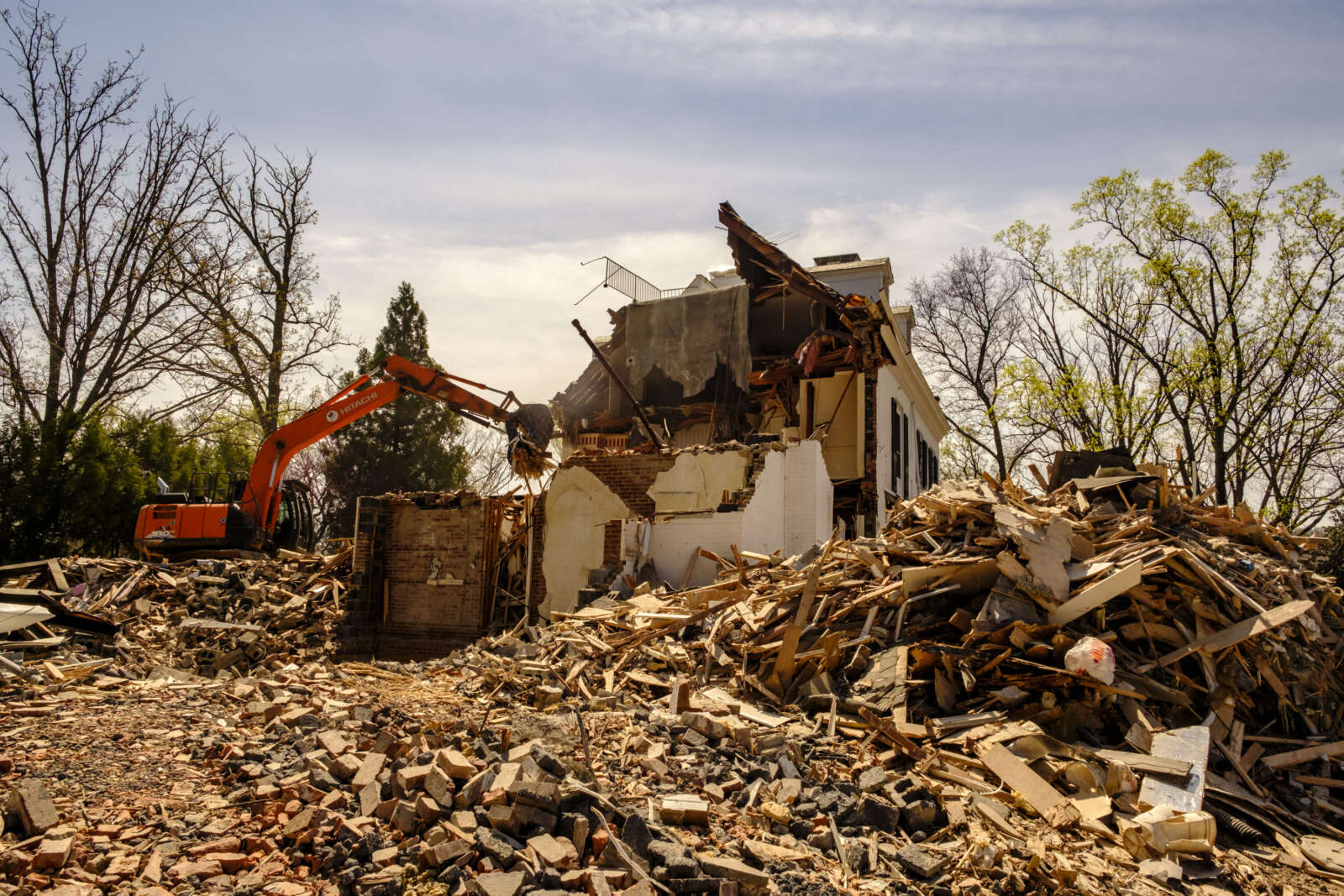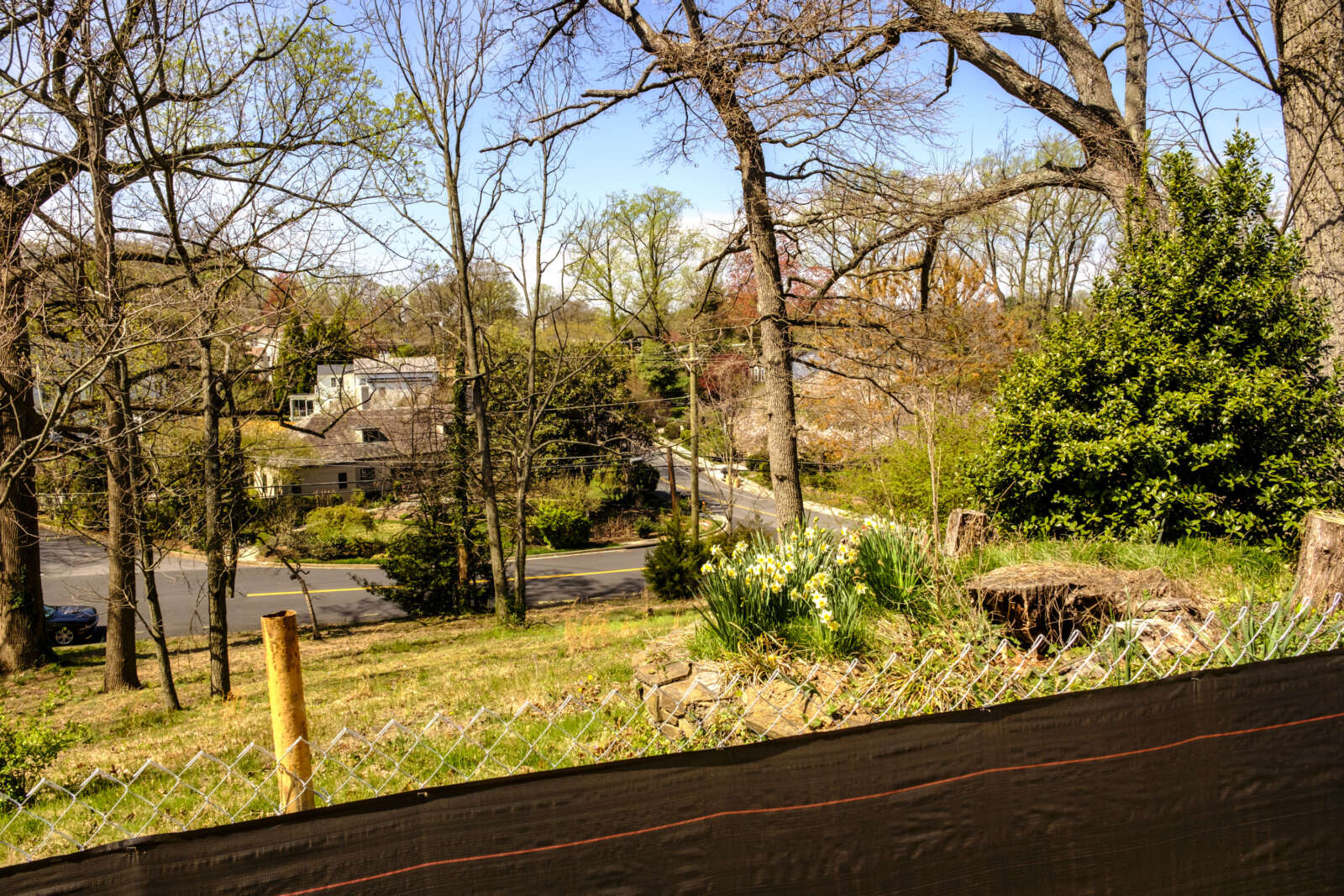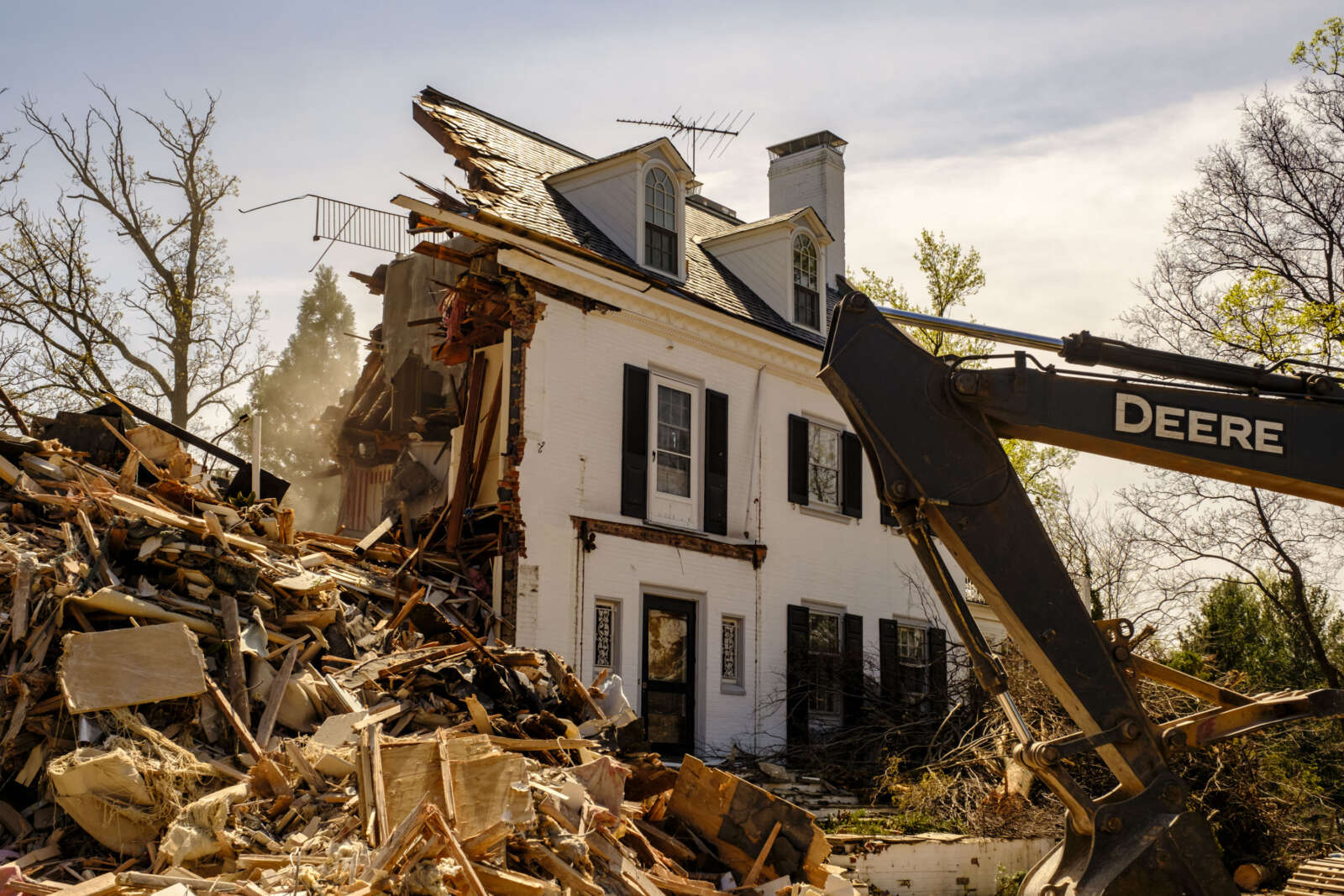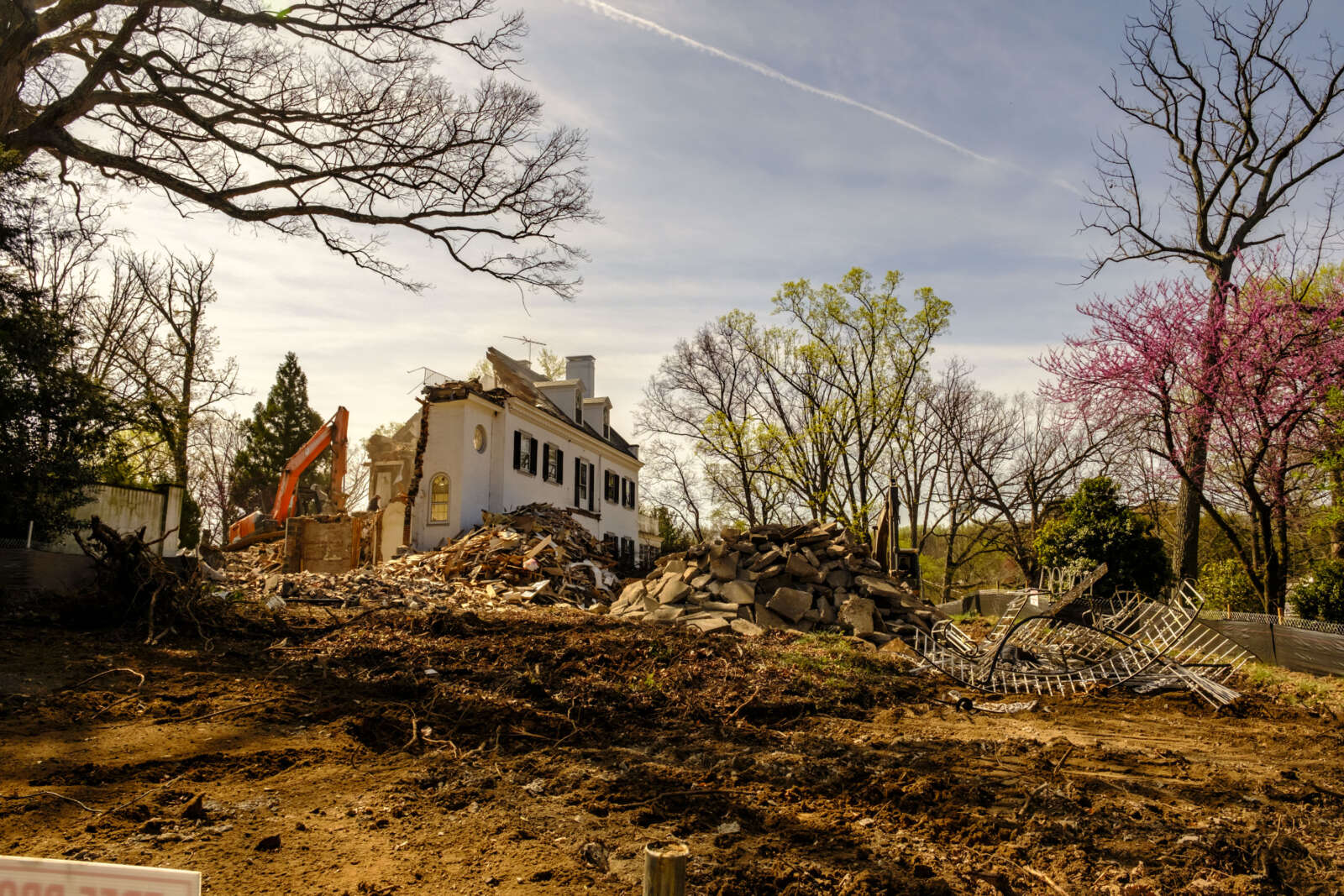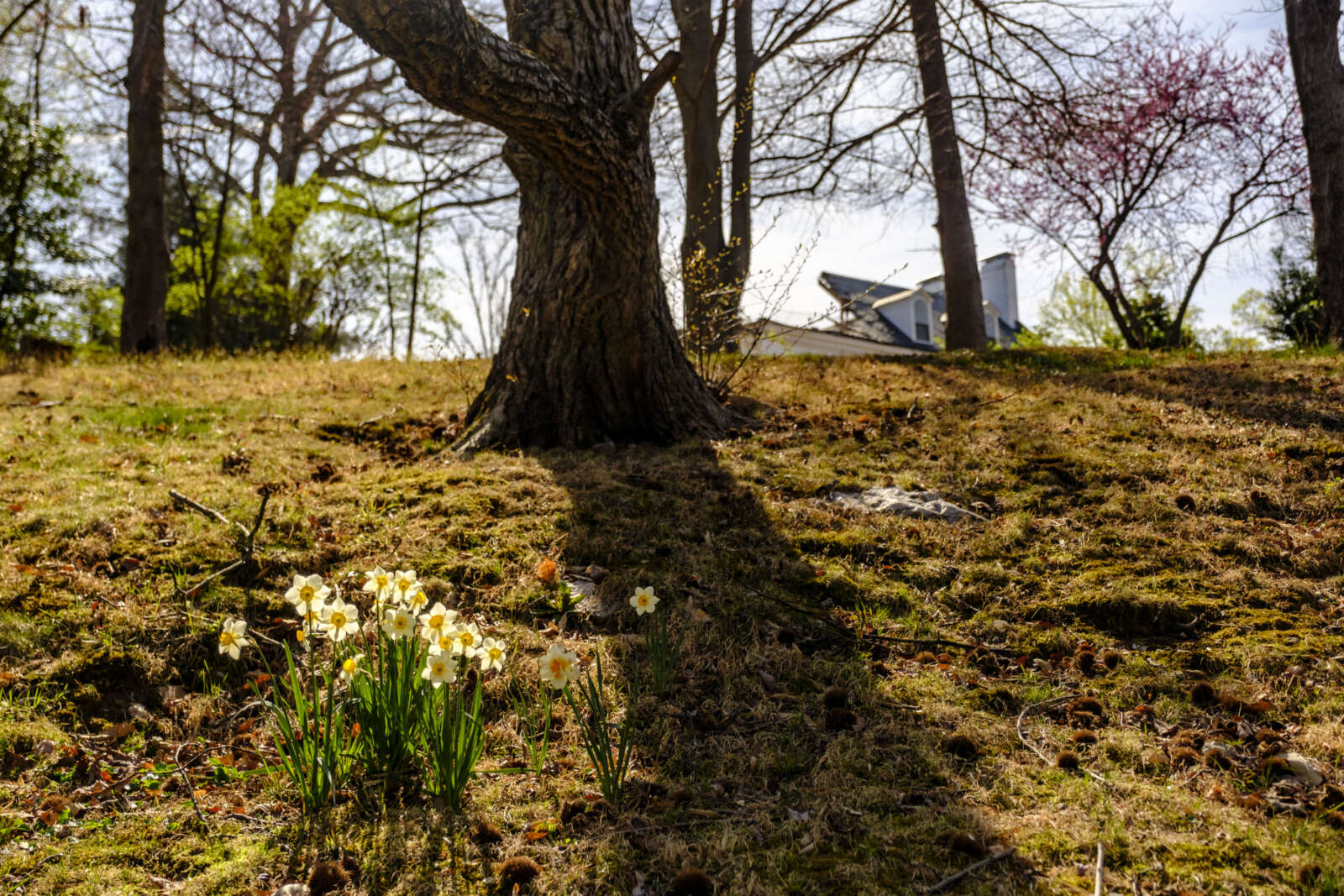A new development with affordable apartments, a church and childcare, across from the Ballston Metro station, is set to debut early next year.
Nearly two years ago, Arlington Partnership for Affordable Housing broke ground on the long-delayed, $84 million project to replace the old Central United Methodist Church building at 4201 Fairfax Drive with an 8-story building with 144 committed affordable units.
Dubbed Ballston Station, the project received $19 million from the county’s Affordable Housing Investment Fund and $9 million from an Amazon-funded state housing grant. Approved in 2017, APAH took over in 2019 and received a construction extension until it could get started.
As of now, construction is 88% complete, APAH Senior Project Manager Ryan Nash tells ARLnow. The project is on schedule and on track to finish next January.
Work has turned to the final finishes within each unit, such as flooring, but other site work — such as sidewalks — remains as well, he said.
“We’ll open right after we’re done and right after we get our certificate of occupancy,” he said.
The project had to weather increasing construction costs — including sky-rocketing lumber prices — as well as high interest rates, Nash said.
“It was day-to-day watching lumber prices,” he says. “Other supply chain issues remain: a big thing these days is electrical switchgear and appliances, but we timed it well and got things procured and ordered in time so it wouldn’t impact our schedule.”
APAH has a list of prospective residents who could move in as soon as the occupancy certificate is inked, said Nash, projecting the building could be fully leased by June.
Future tenants, who mostly reside in Arlington right now, range from those in affordable housing to those leaving “rapidly disappearing” market-rate affordable units, he said.
“Because it’s so close to Ballston Metro, and has a low parking ratio, it will be catered toward residents who would have a car-free diet,” he said.
Ballston Station will have a mix of one- and two-bedroom units. There will be 15 units for people earning up to 30% of the area median income (AMI), with 60 units for those earning 50% AMI or less and 69 at 60% AMI.
The church, meanwhile, will have a series of celebration events starting with Easter on March 31, says Rev. Sarah Harrison-McQueen.
“In the weeks after Easter, we’ll have a variety of open houses and mission events to culminate with a building dedication worship service,” she told ARLnow.
The CUMC congregation currently meets at a church in the Arlington Forest neighborhood. When it returns to Ballston, it will have a revamped church space with a dedicated commercial kitchen to support its food distribution ministry, providing hot breakfast, lunch and groceries, medical care and referrals to more than 200 people.
The childcare provider, Kinhaven School, is set to open next spring with capacity for 115 children — a significant increase from the 67 permitted in the original building, says Director Amy Hitchcock.
Kinhaven School was co-located with CUMC for nearly 50 years until 2017, when construction on the new development was initially expected to start.
It relocated to St. George’s Episcopal Church in Virginia Square and the school now plans to keep that location for a half-day preschool serving 2- to 5-year old children. The Ballston Station location will enroll infants through school-aged children.
“The Ballston Station project is exciting as each of the three partners contributes to Arlington’s vitality: APAH and its stellar approach to housing; CUMC’s commitment to addressing food insecurity as a lived mission of their faith; and Kinhaven’s pledge to participate in the Virginia Child Care Subsidy program and offer non-traditional hours to support working families,” Hitchcock said.


